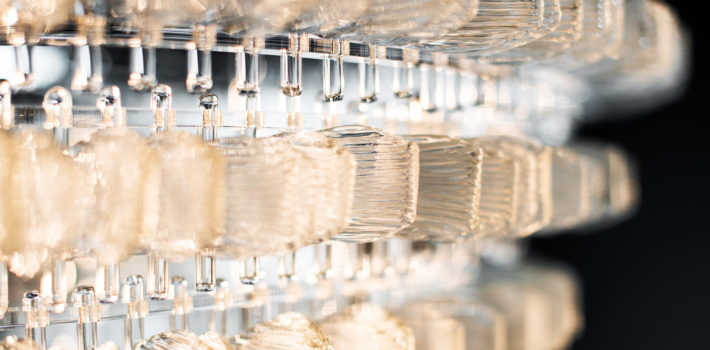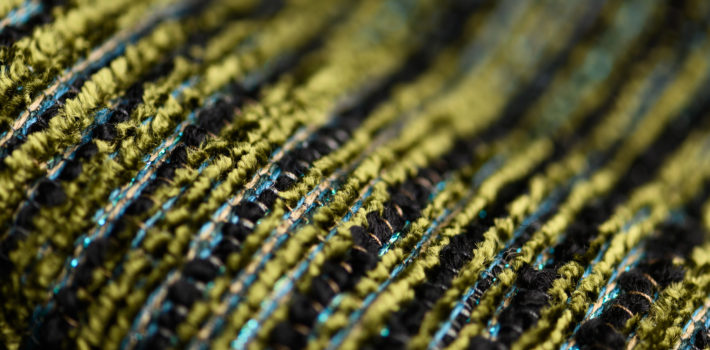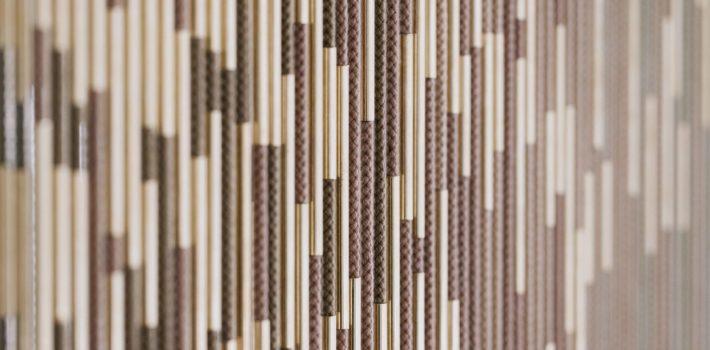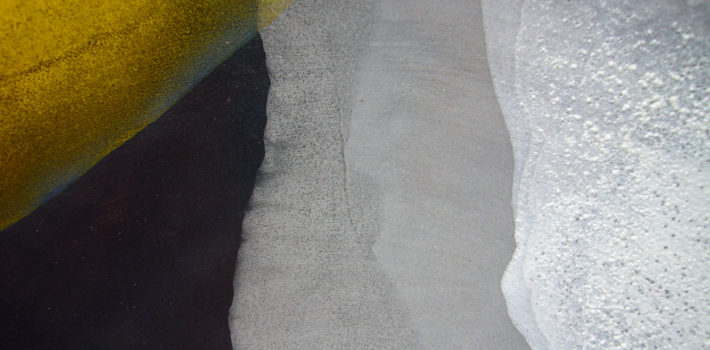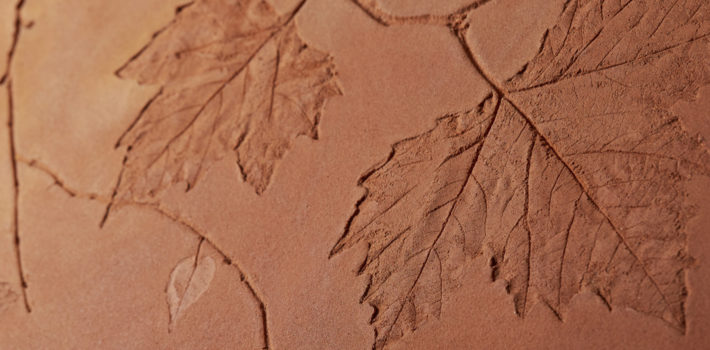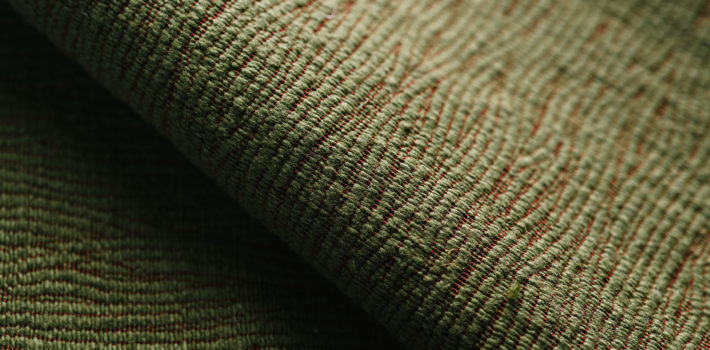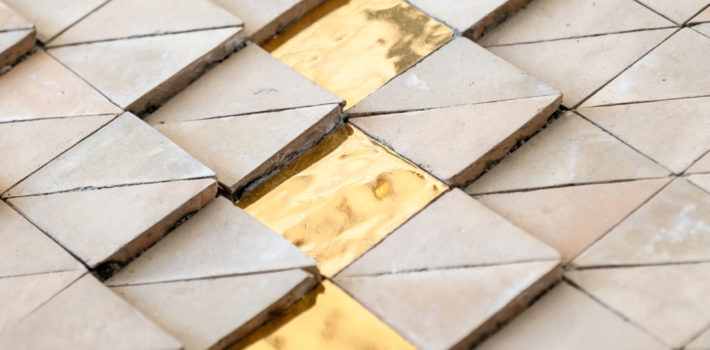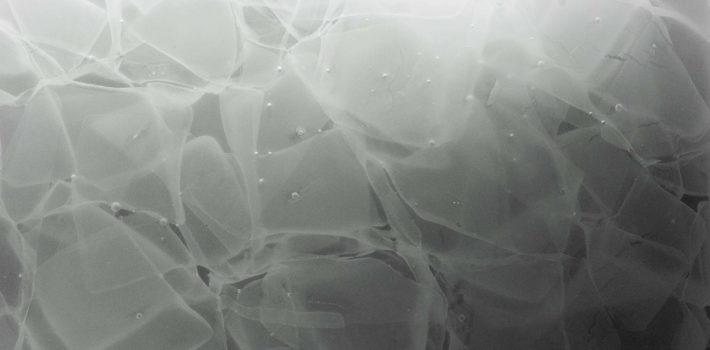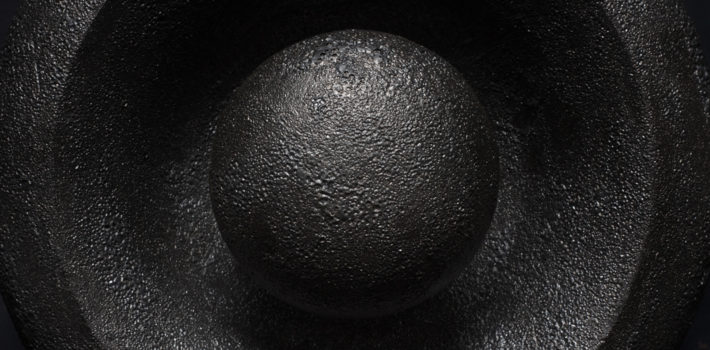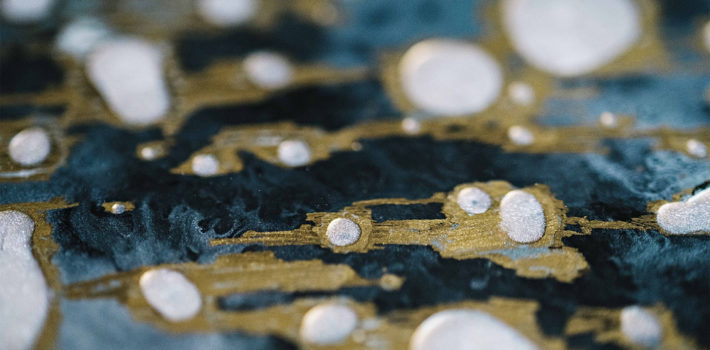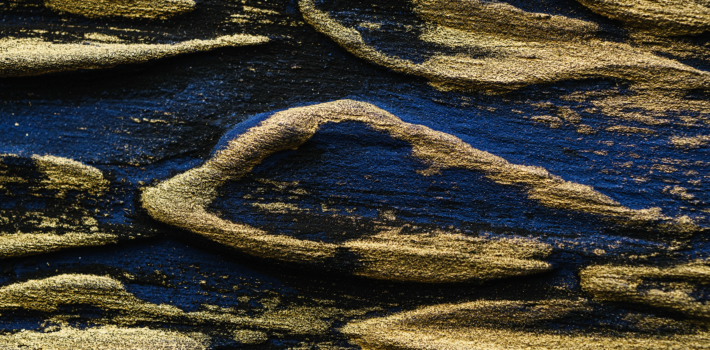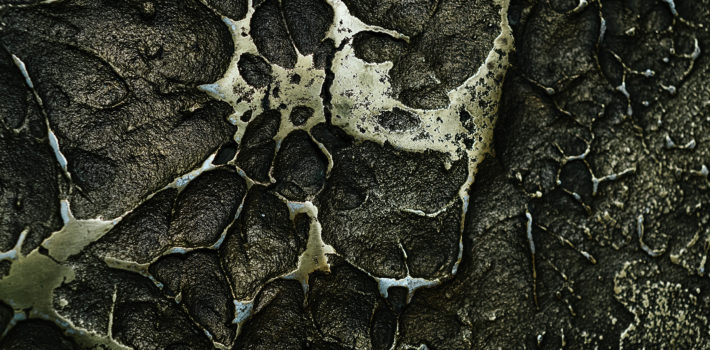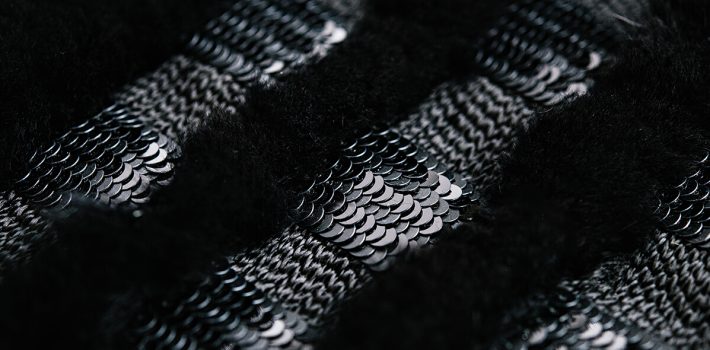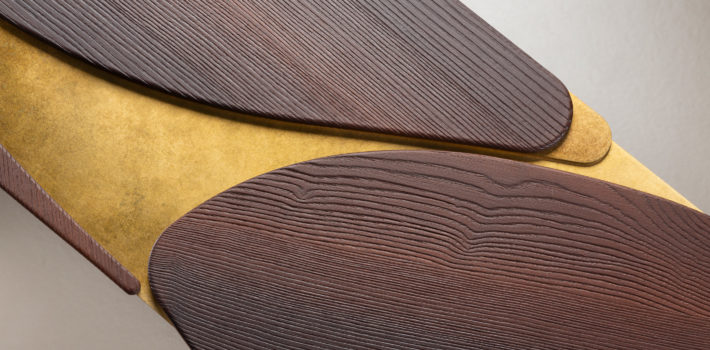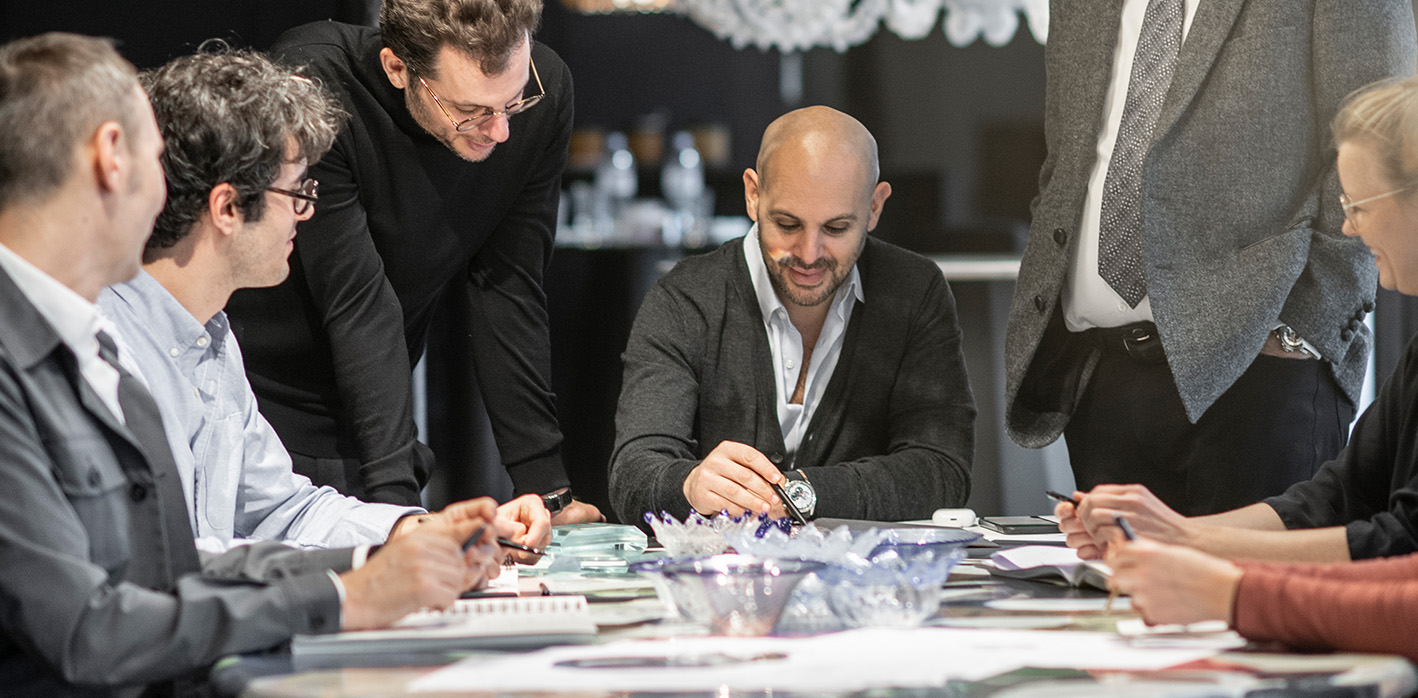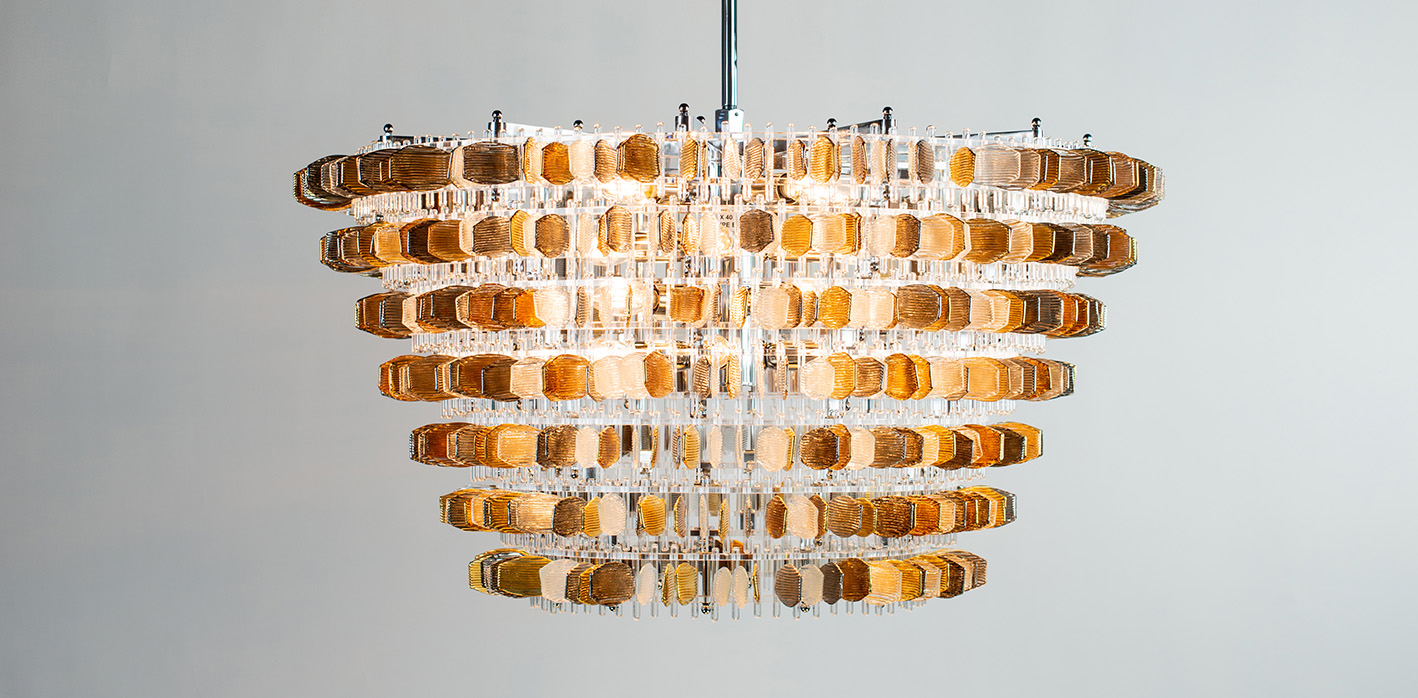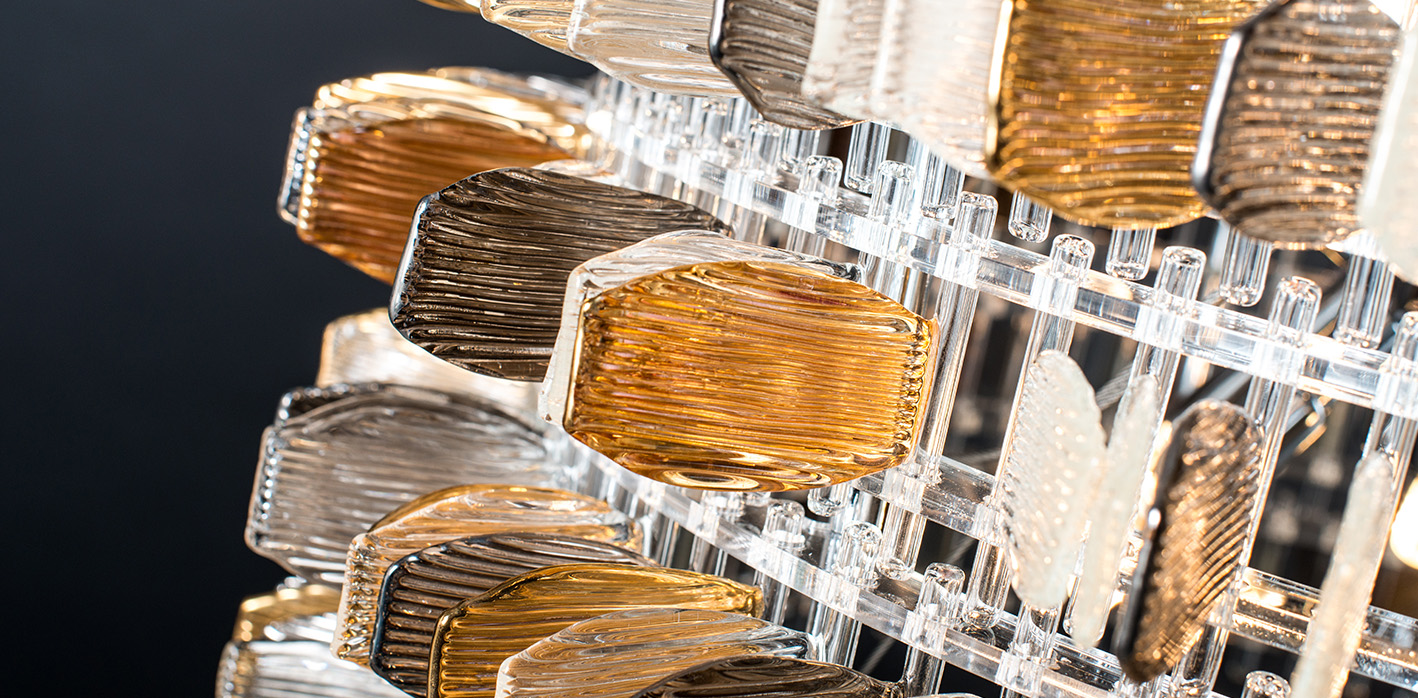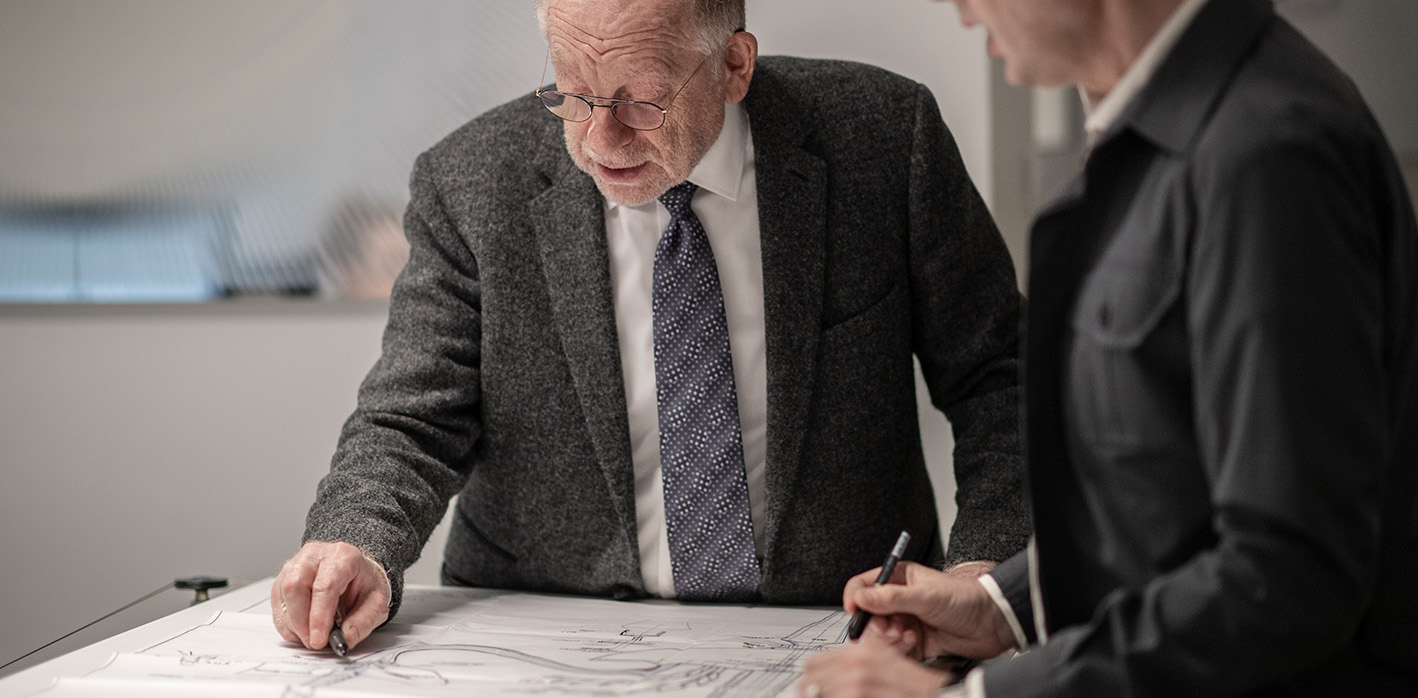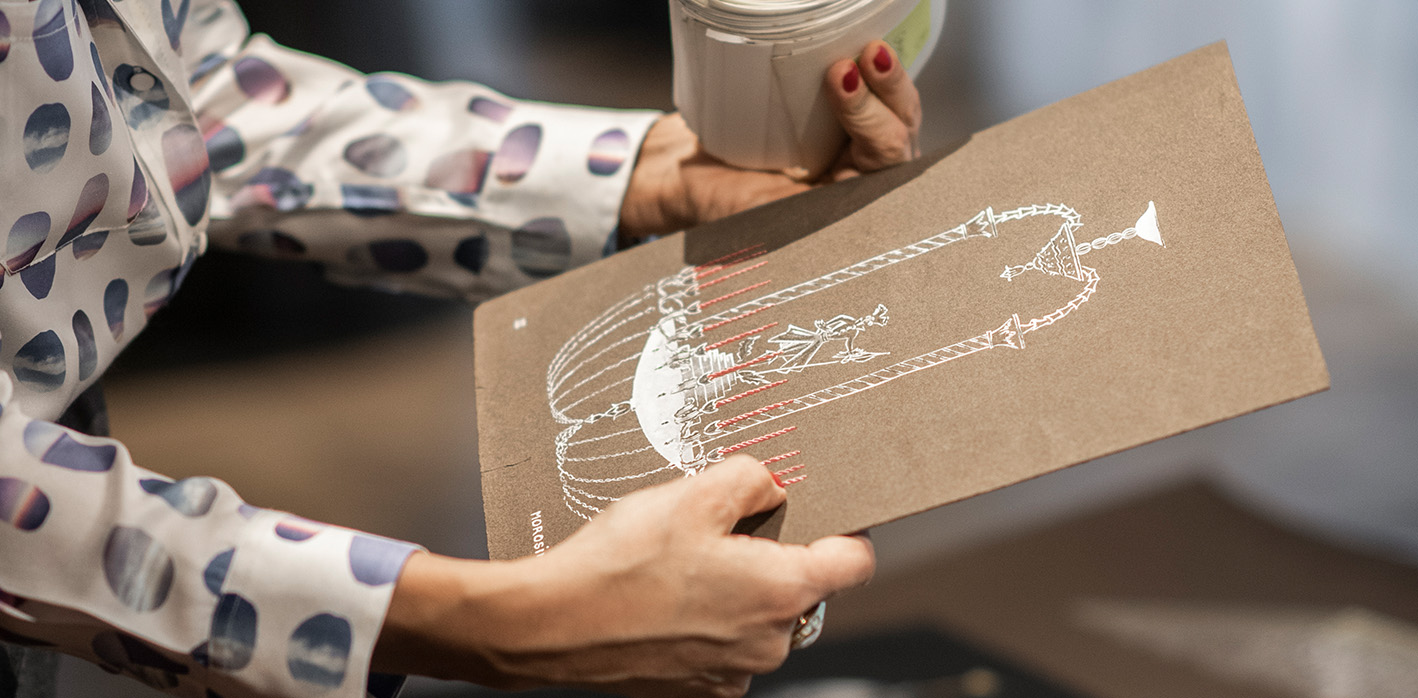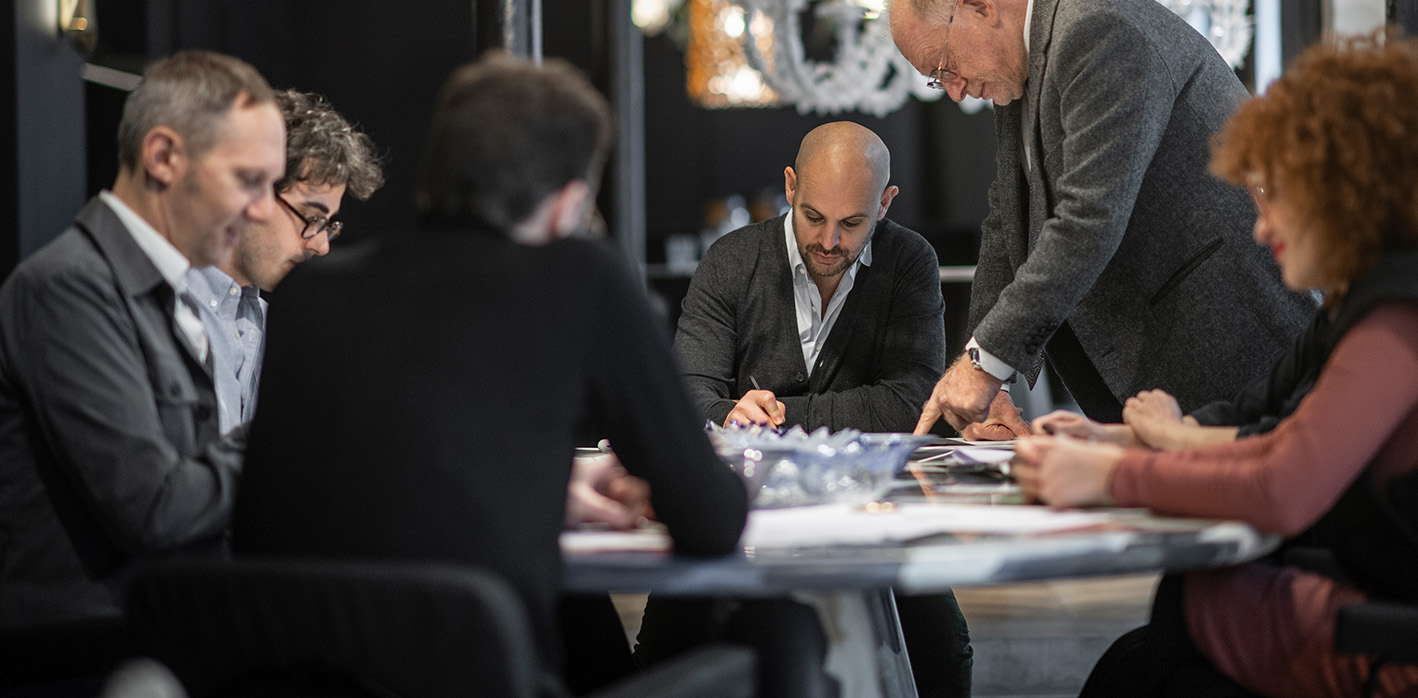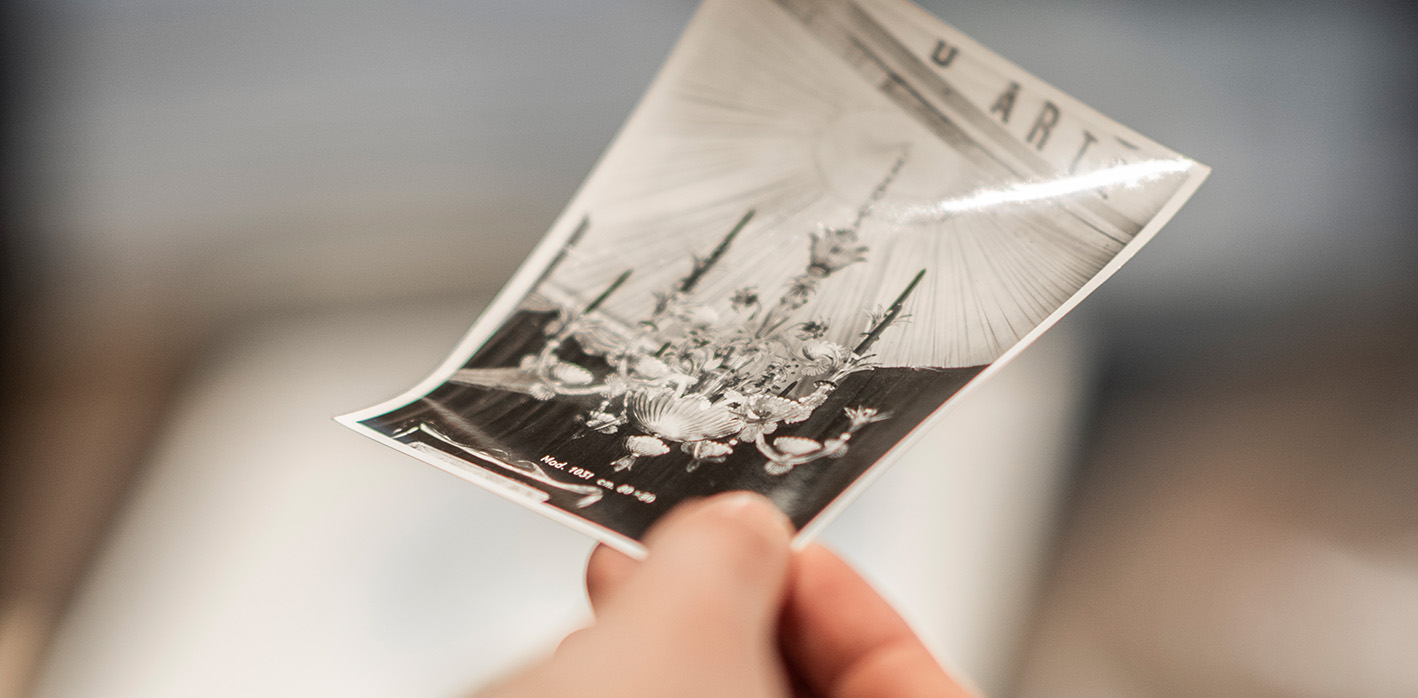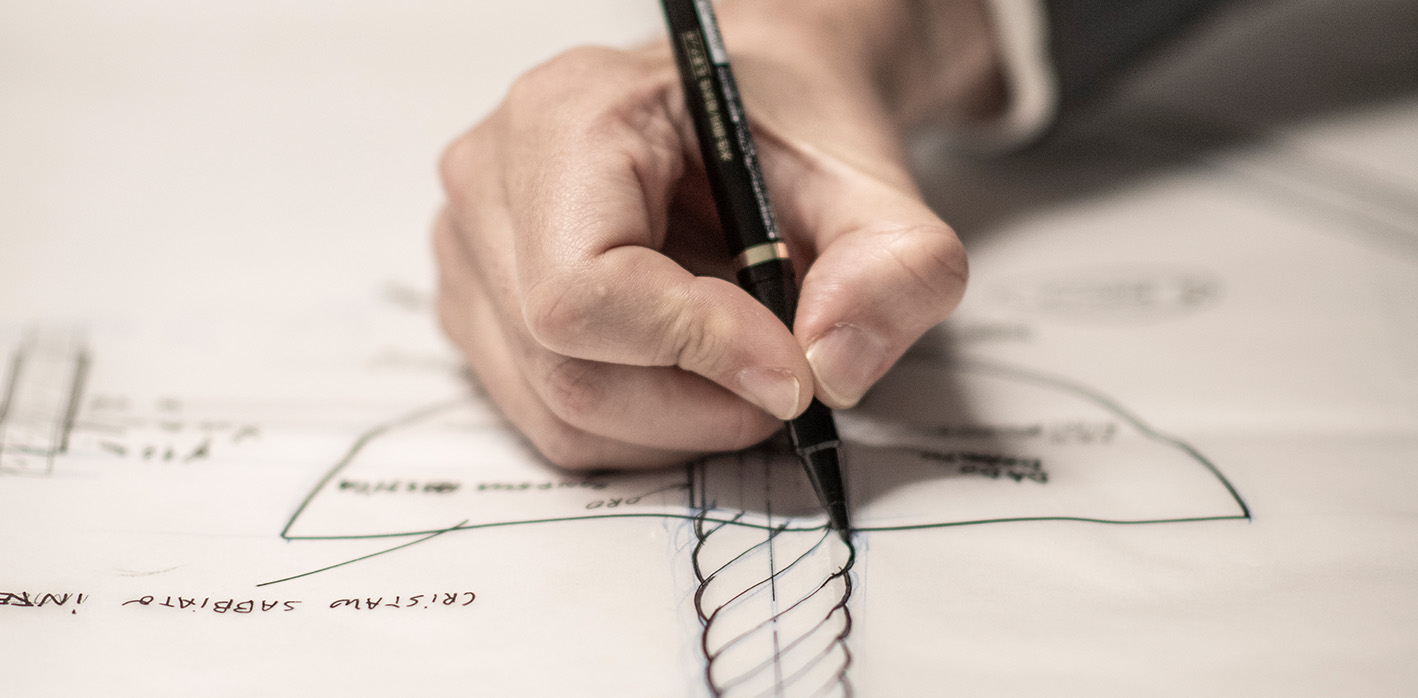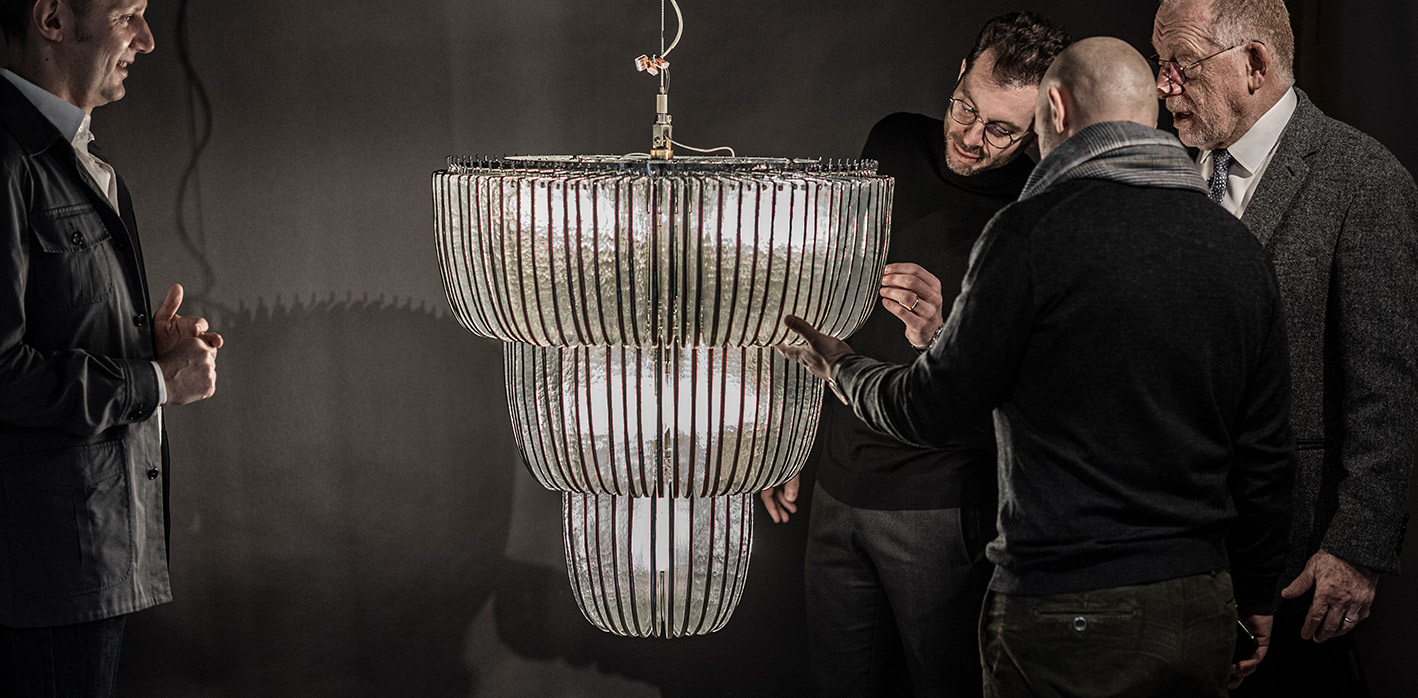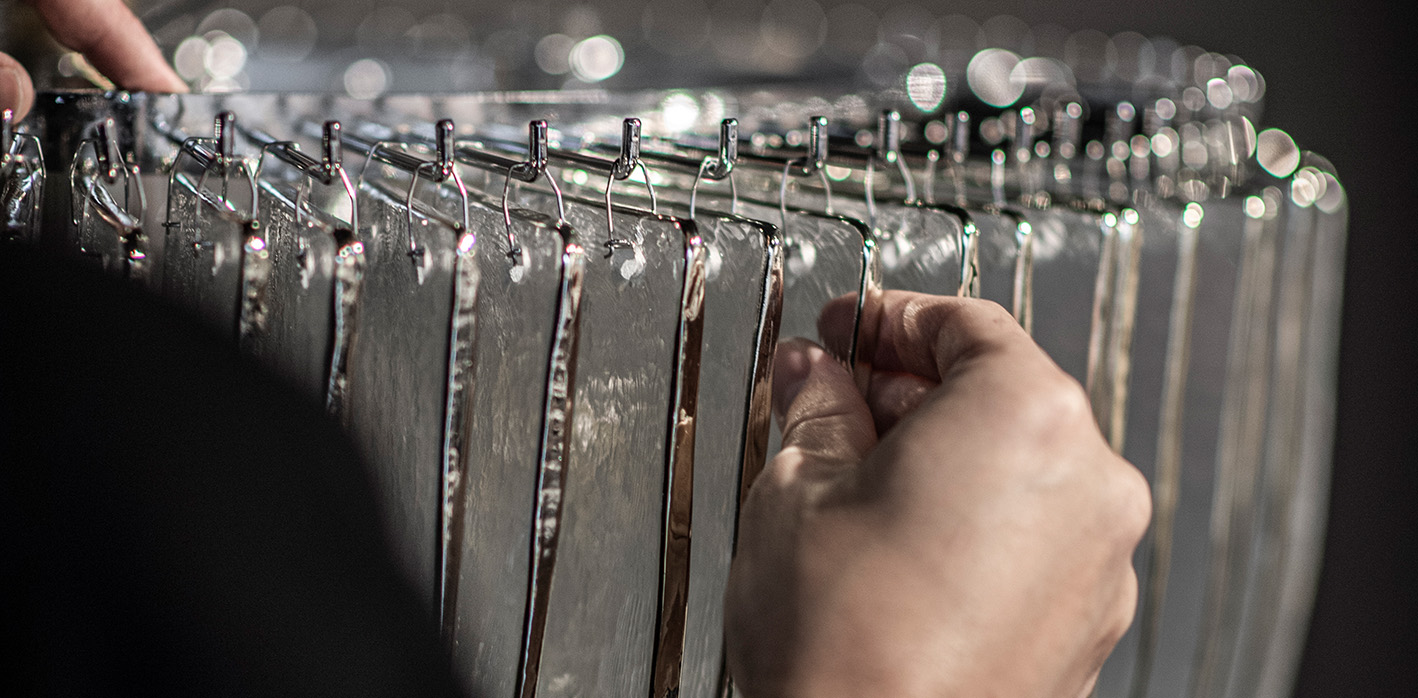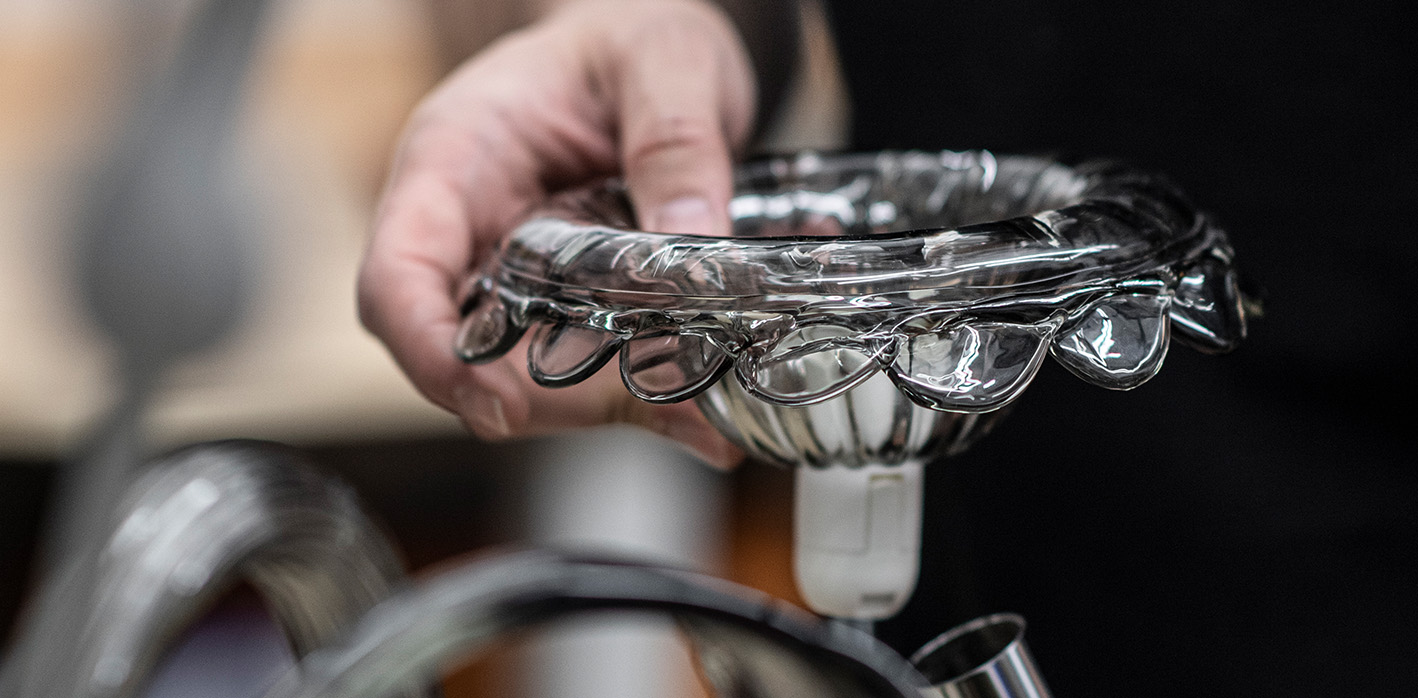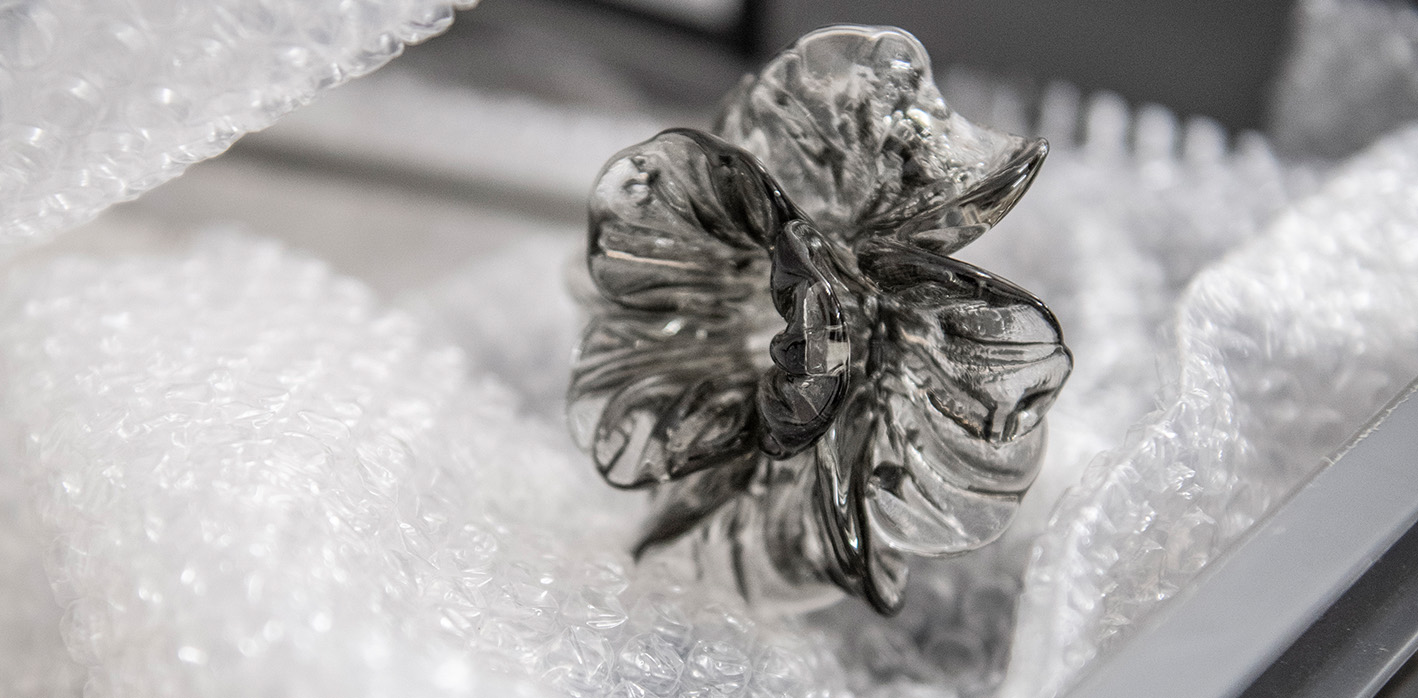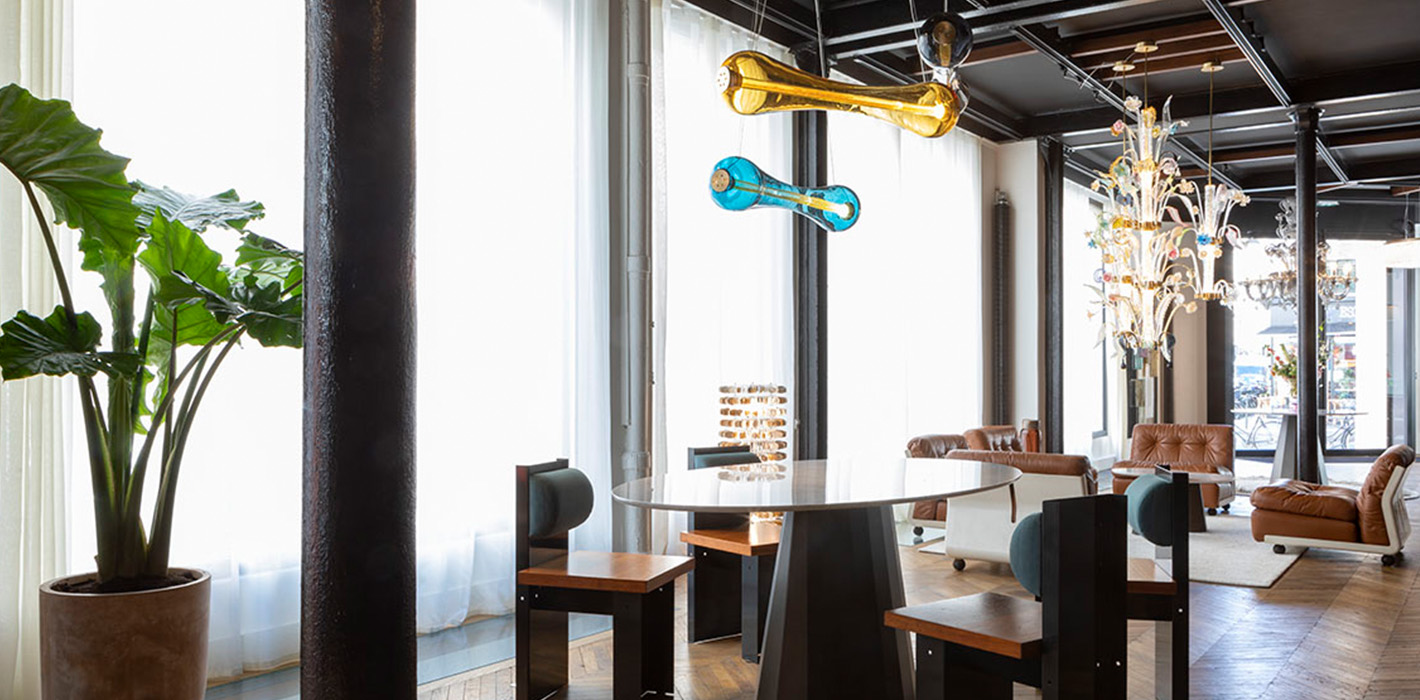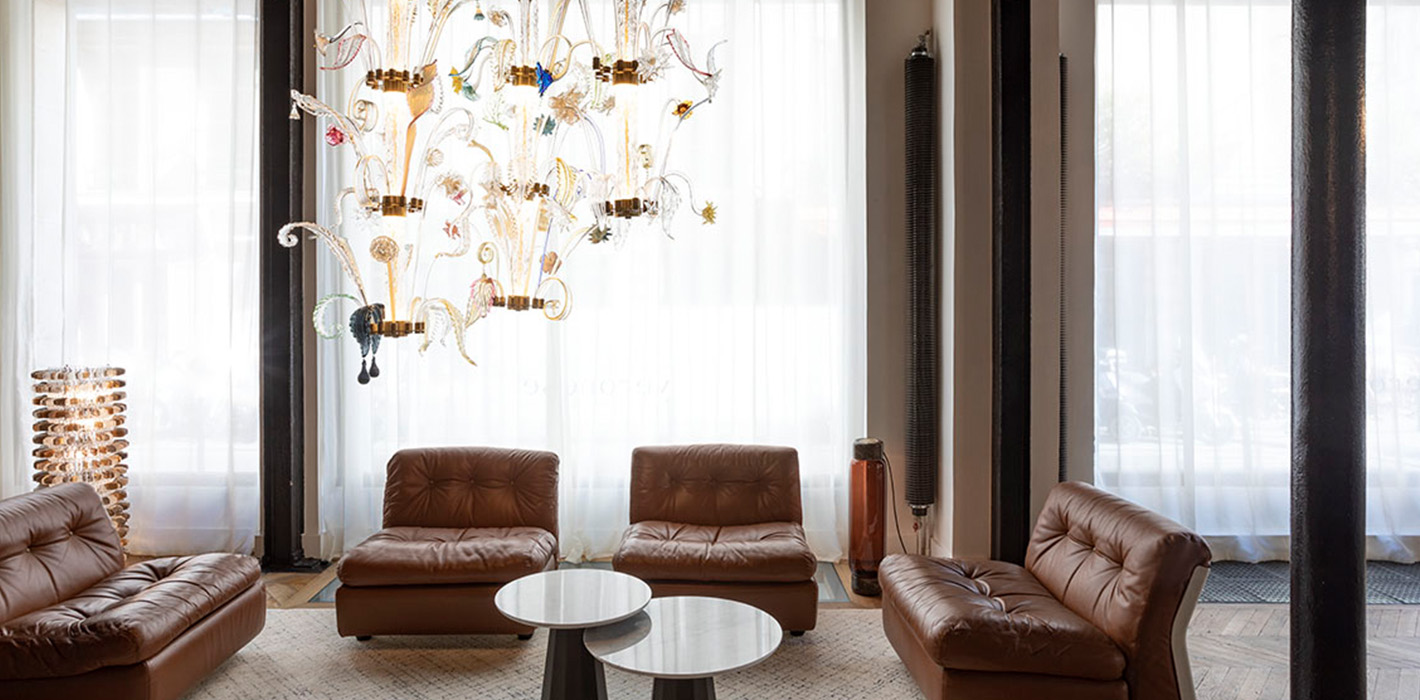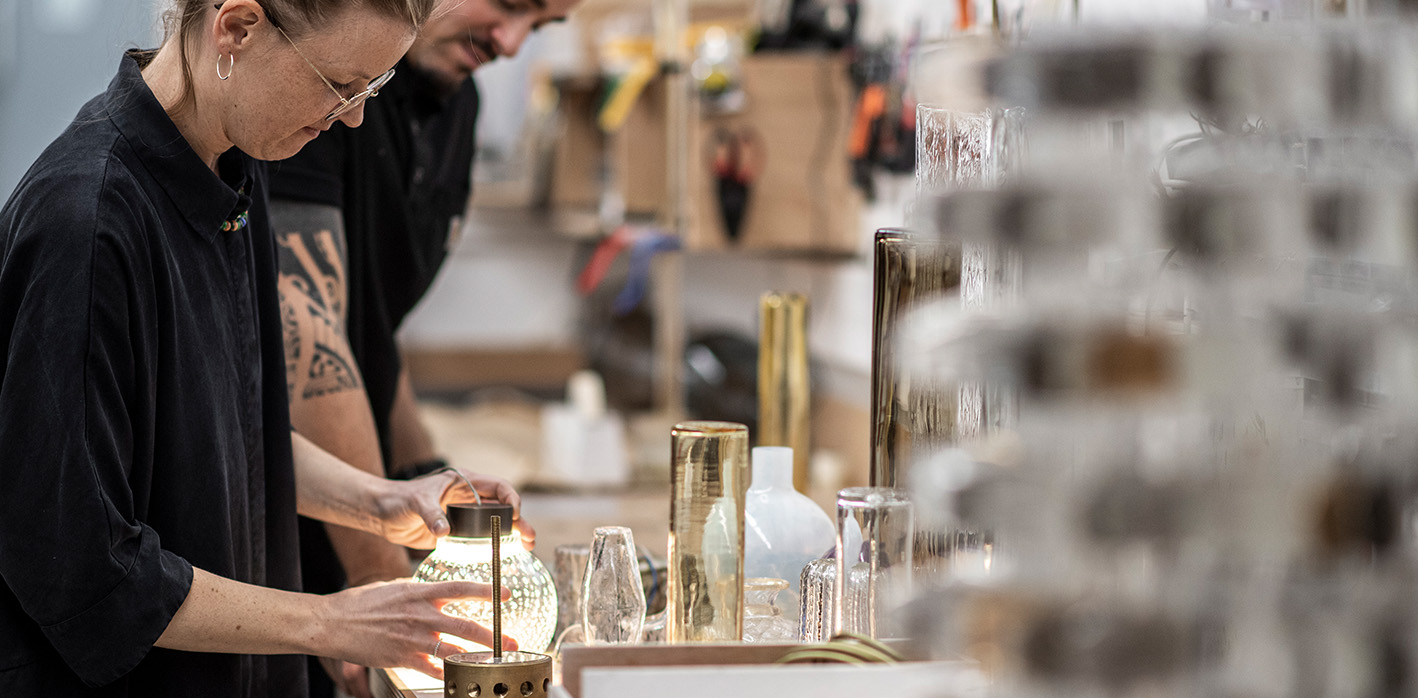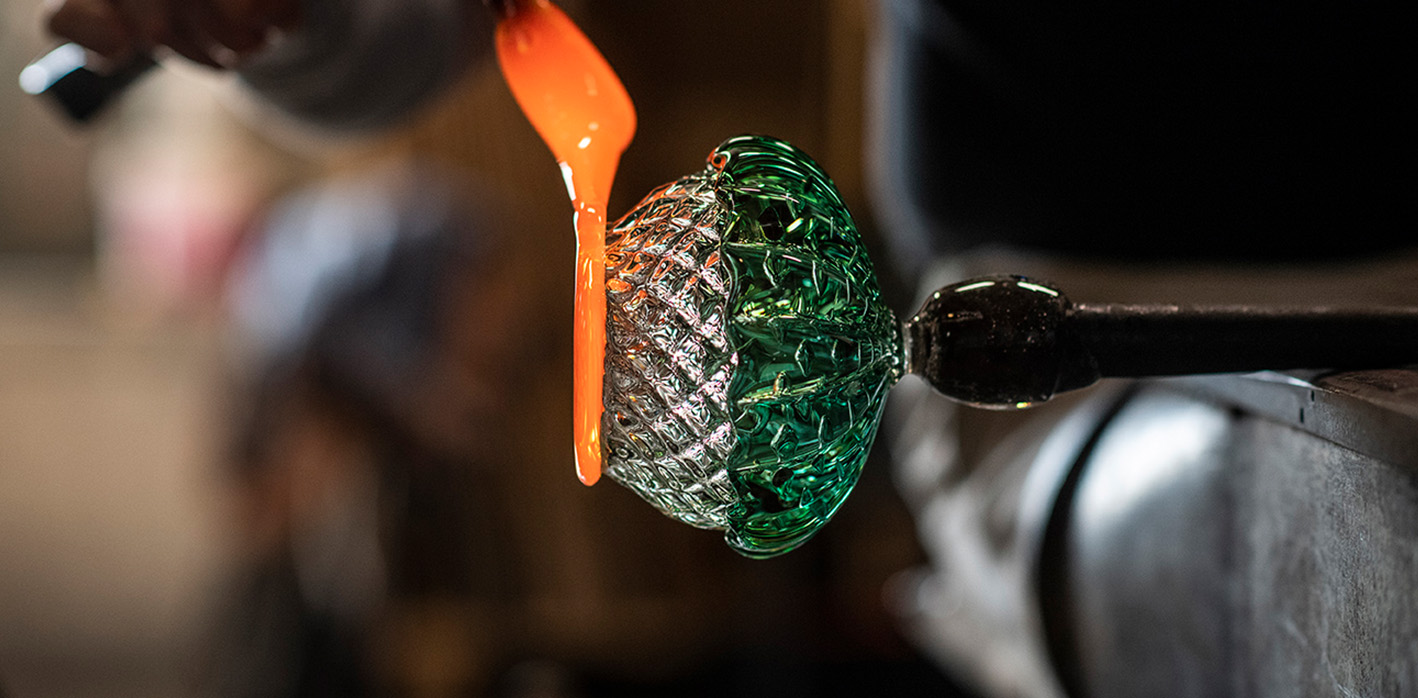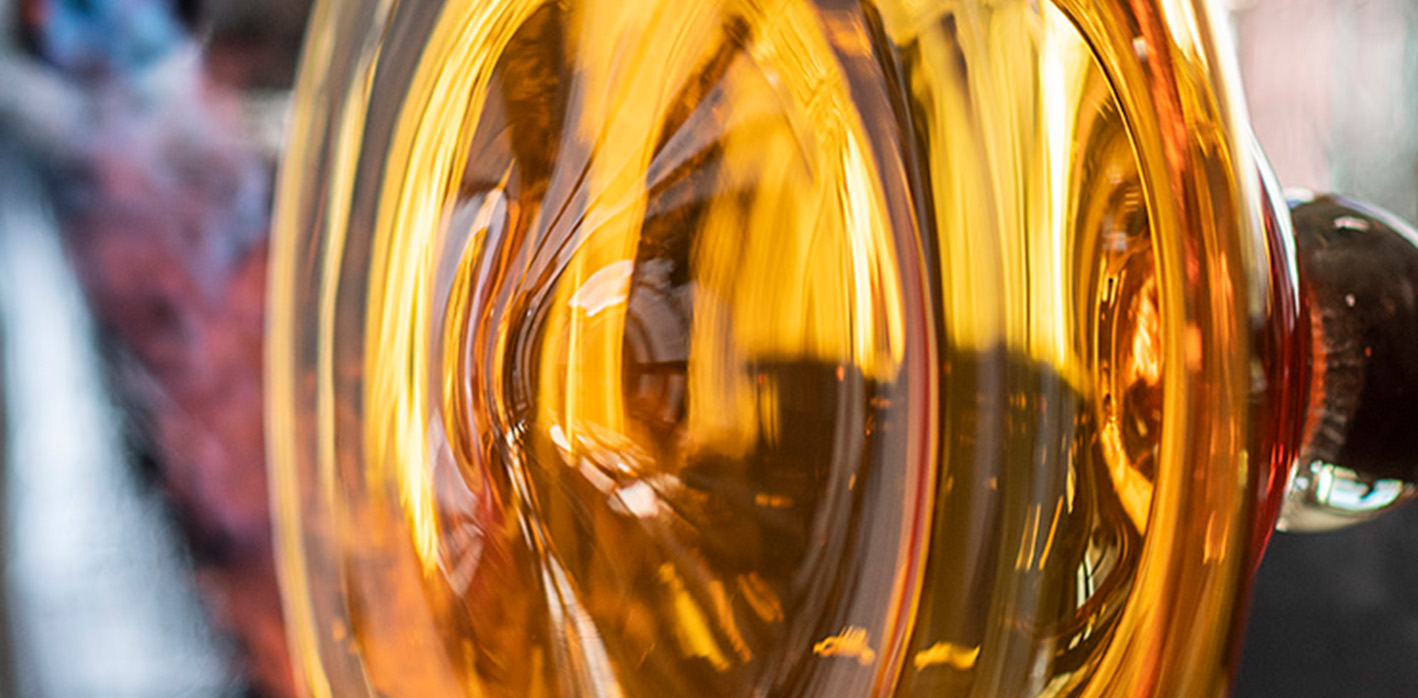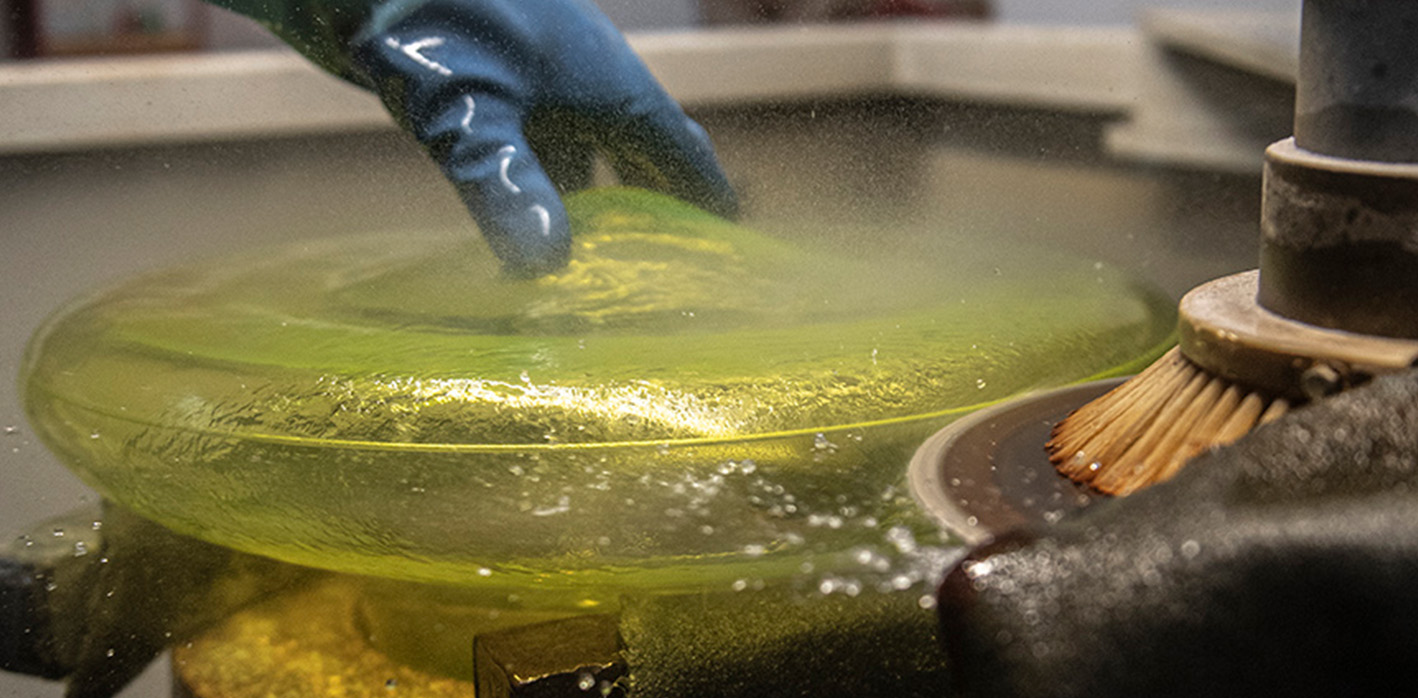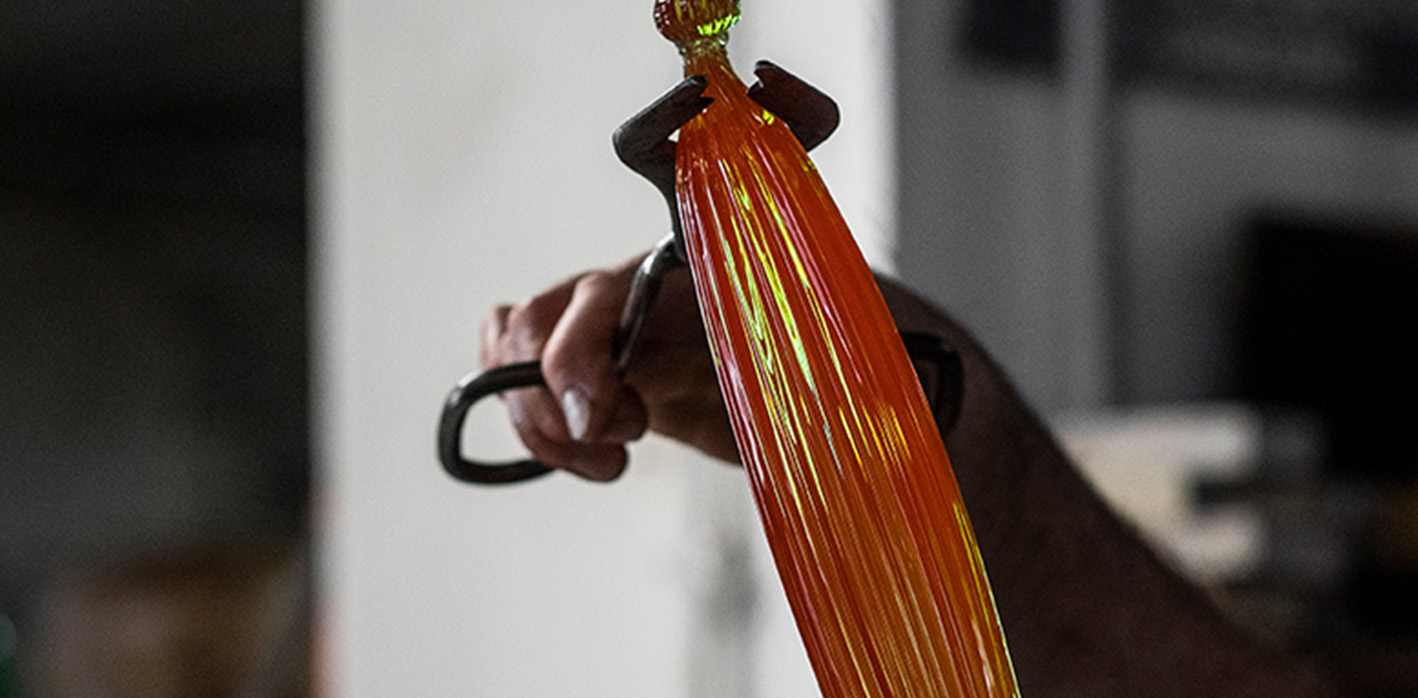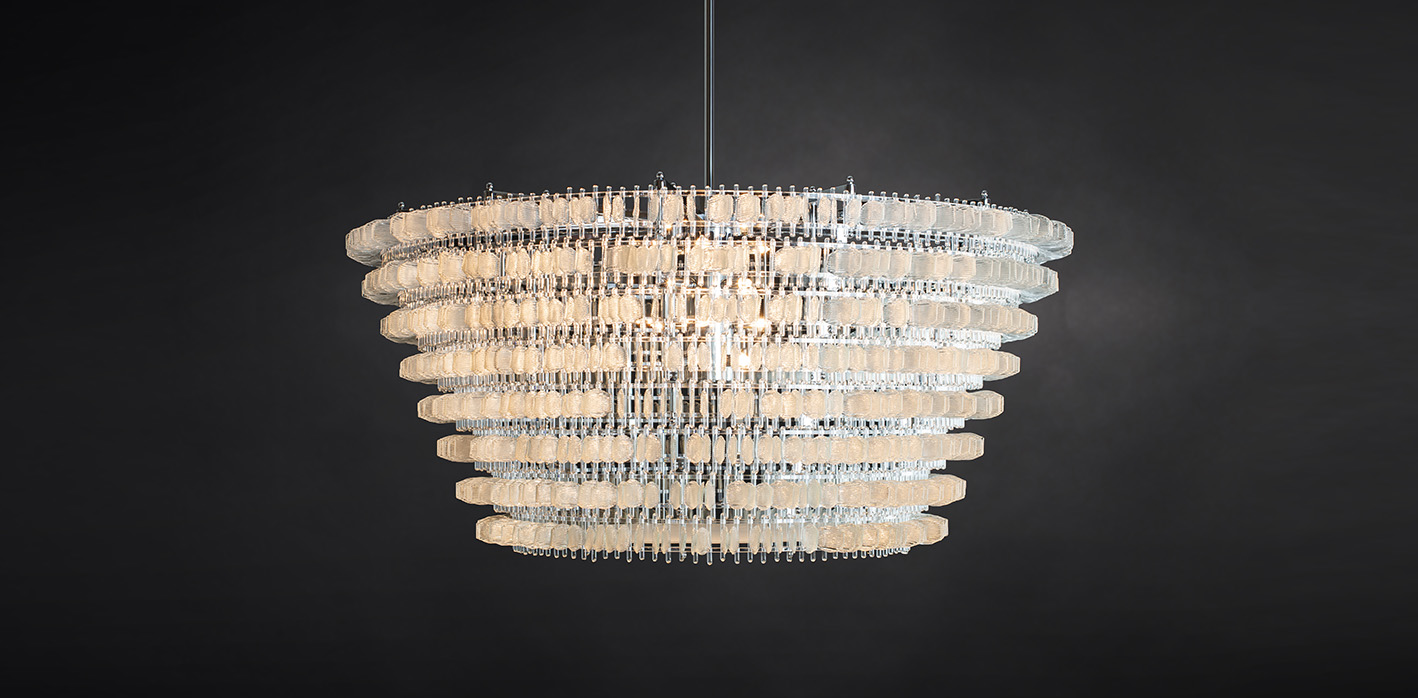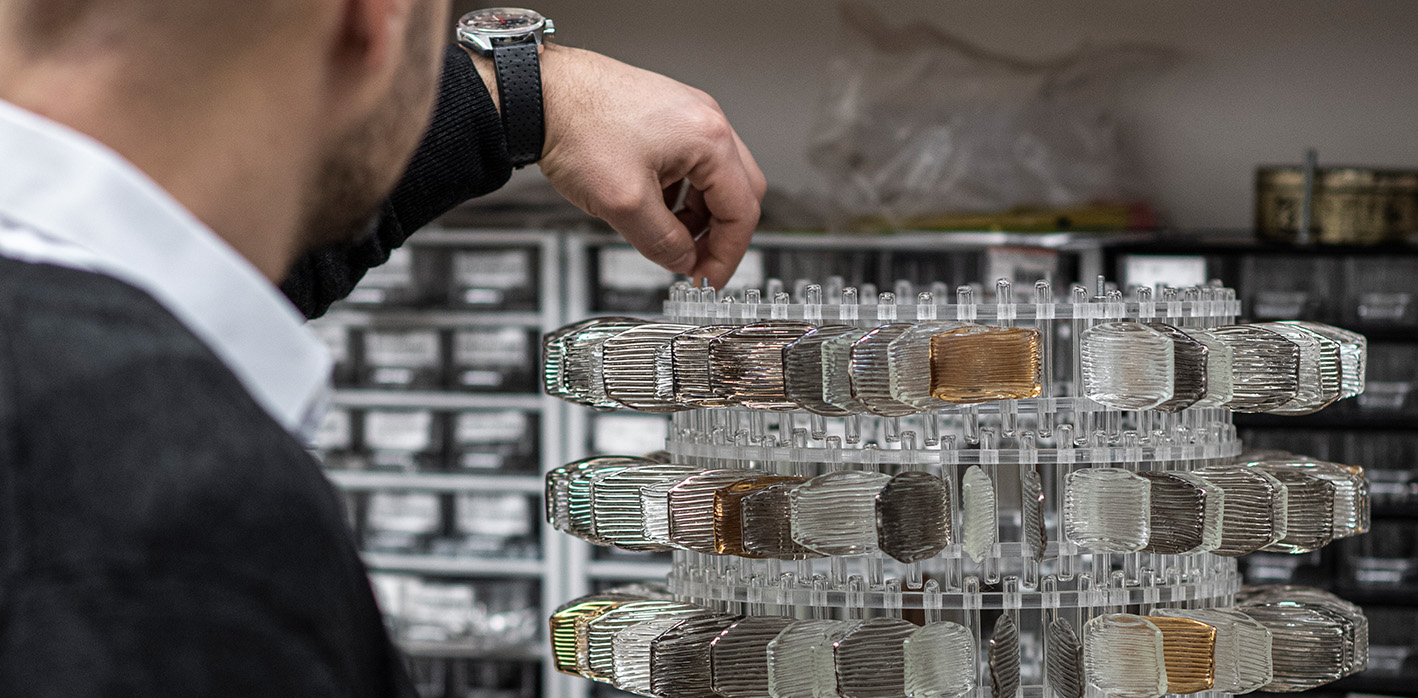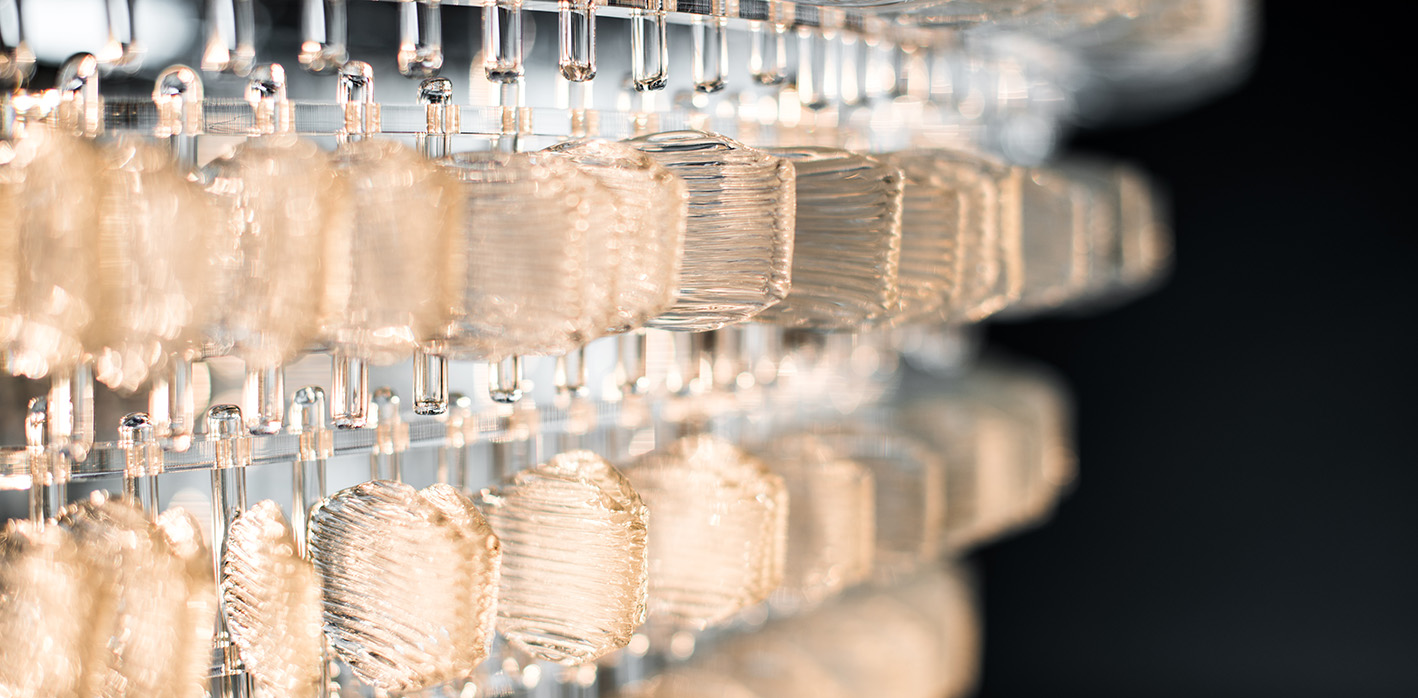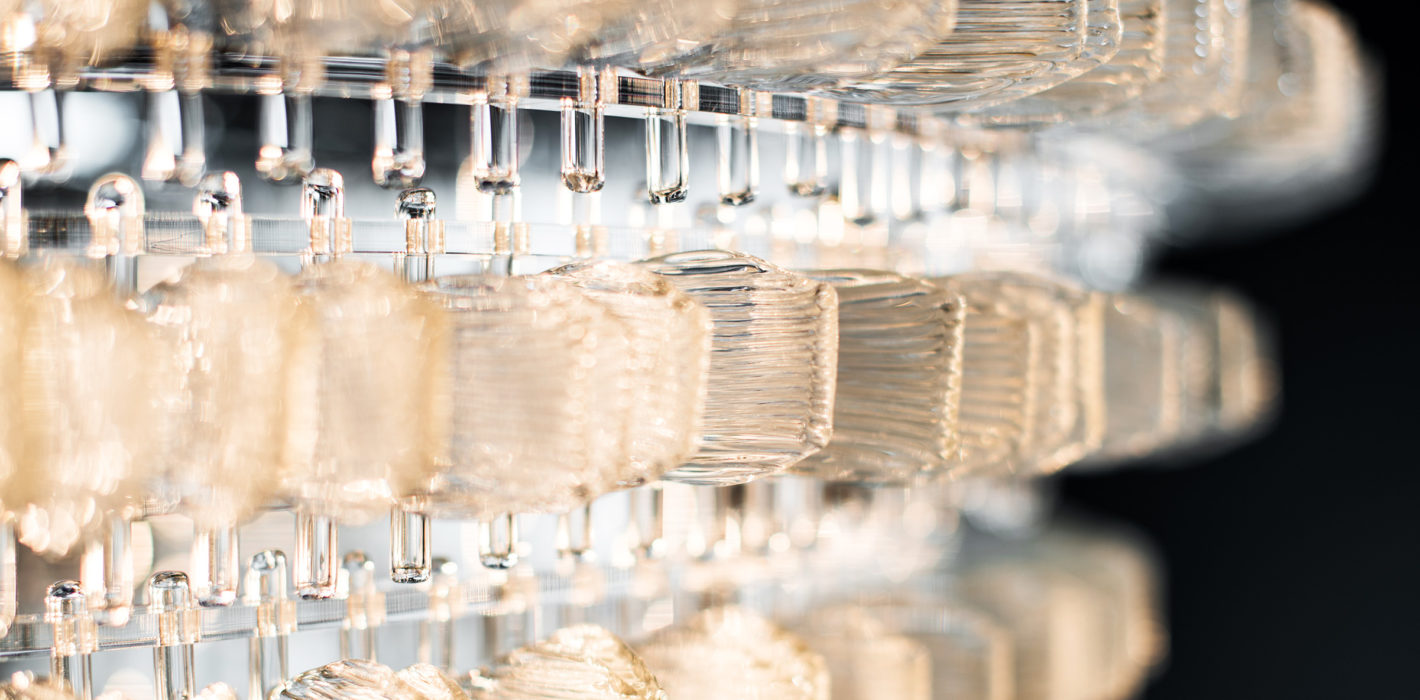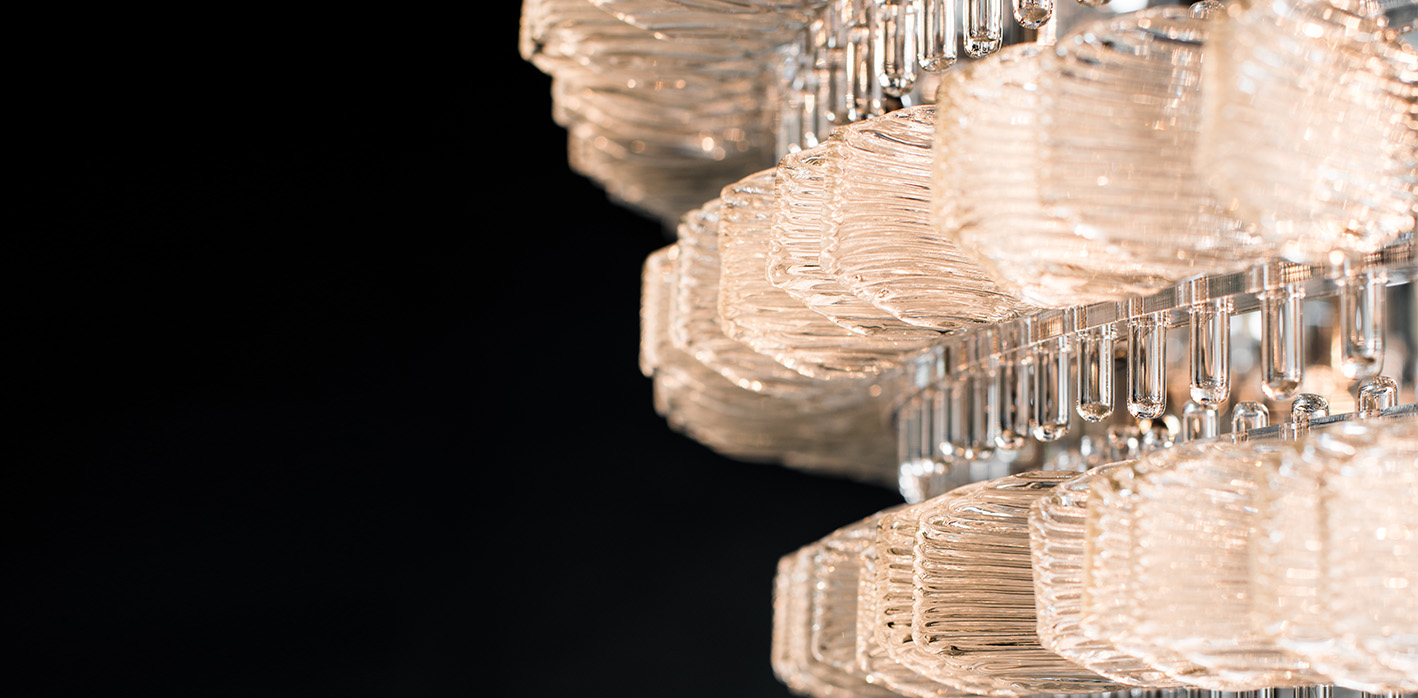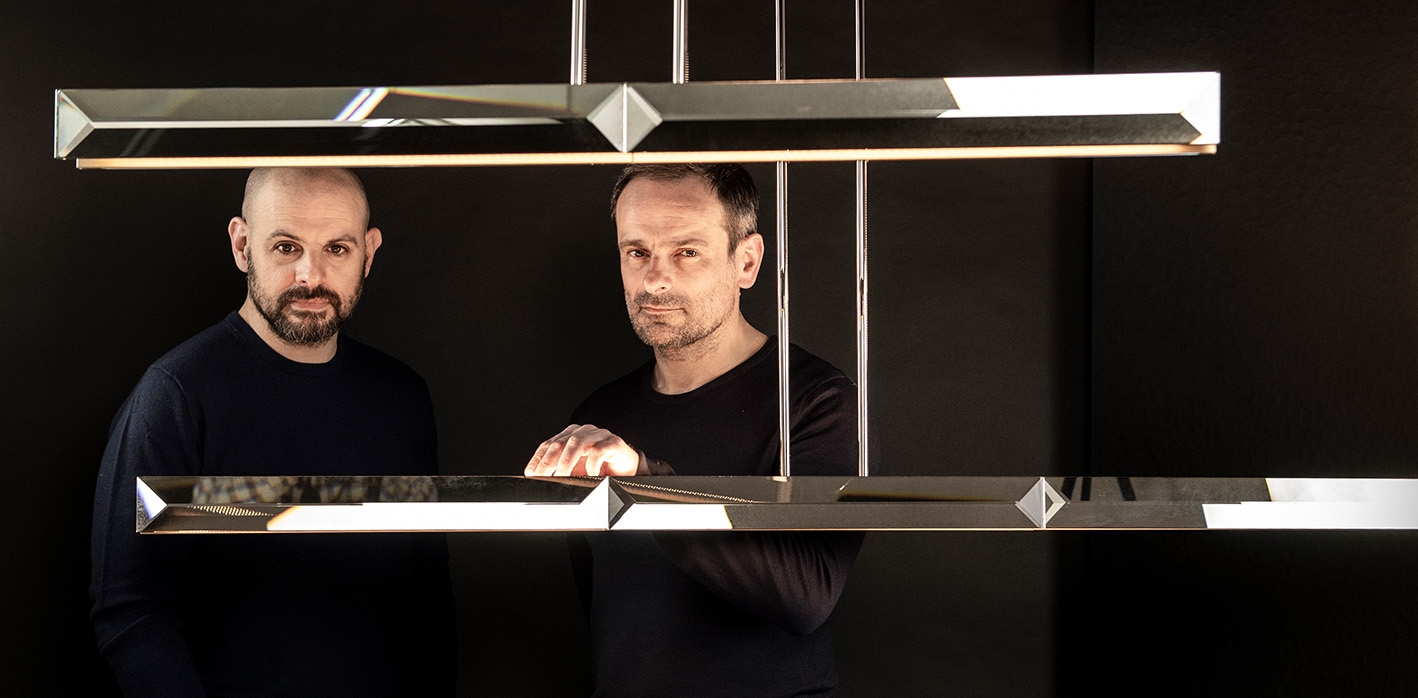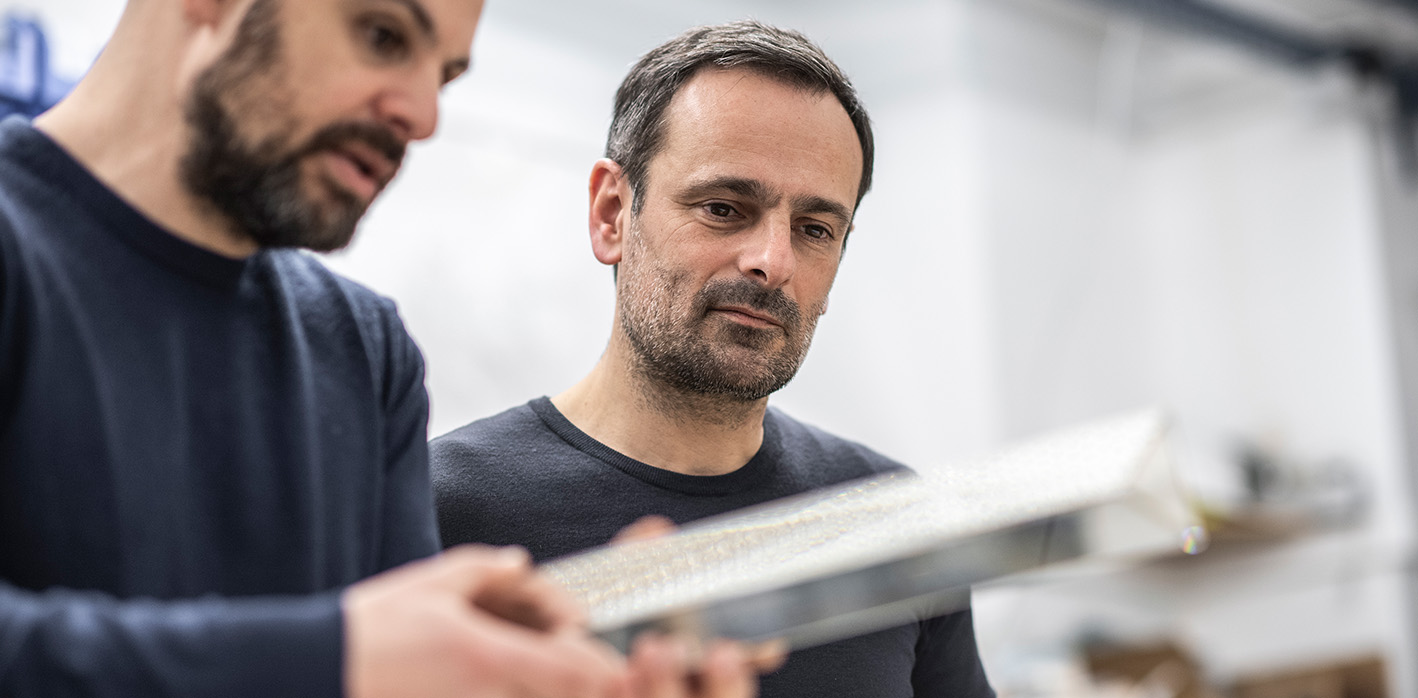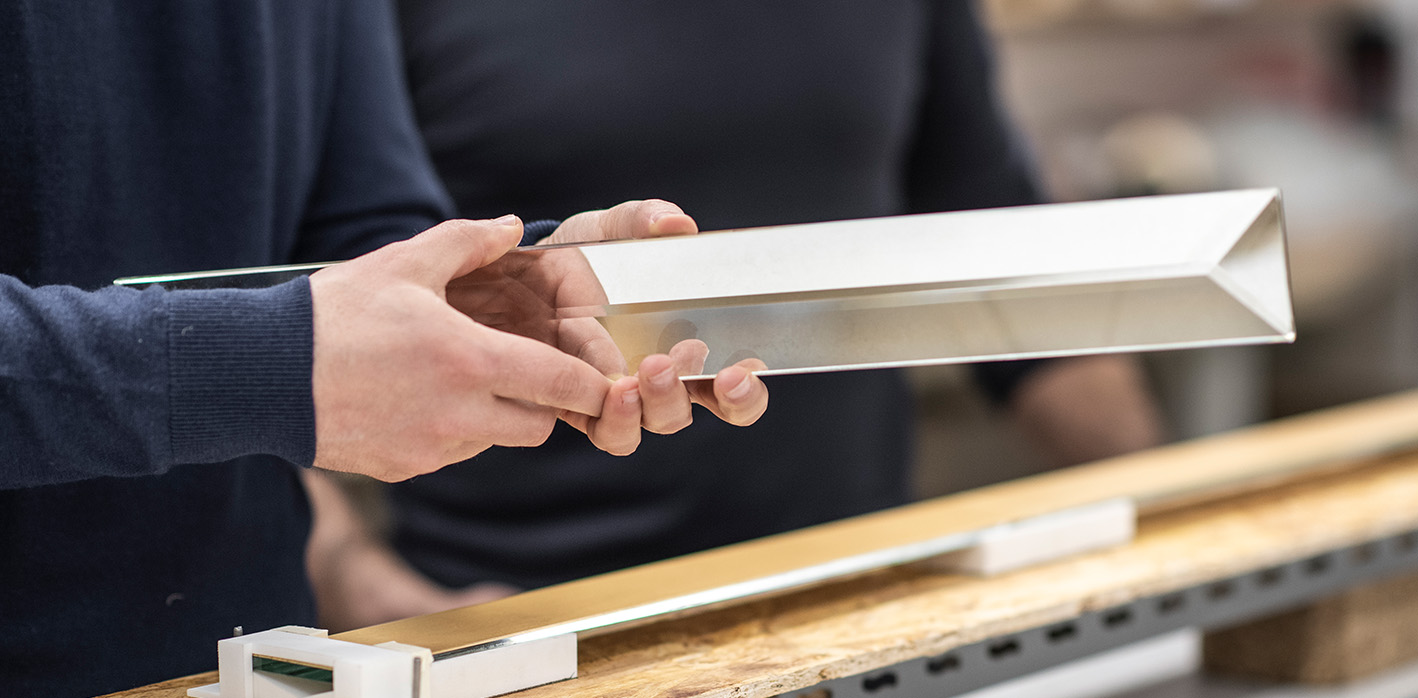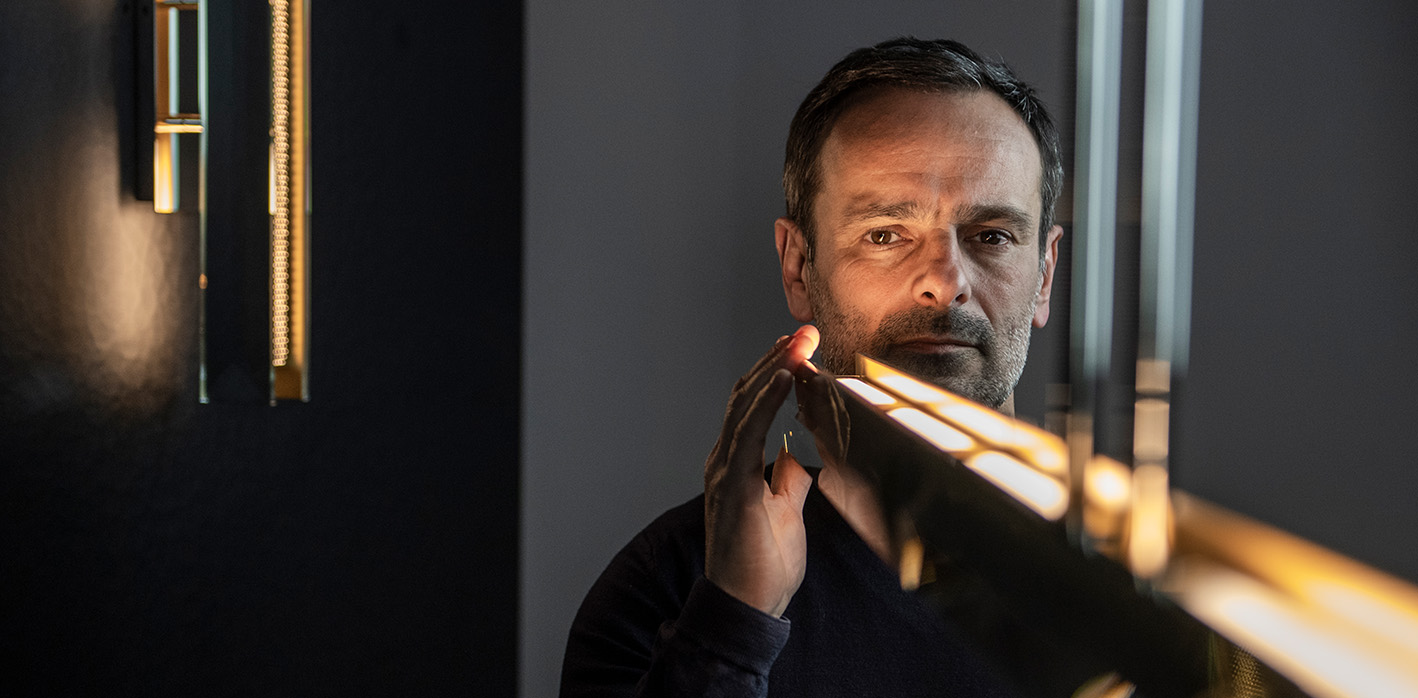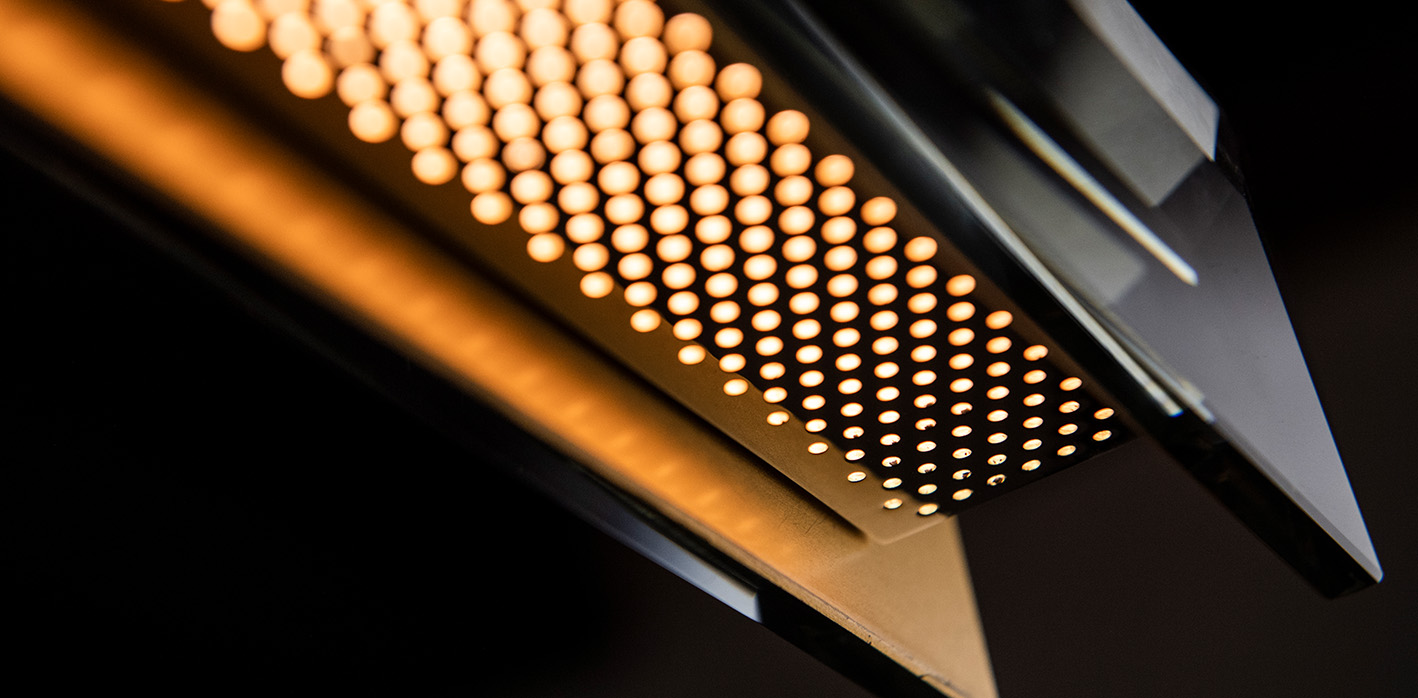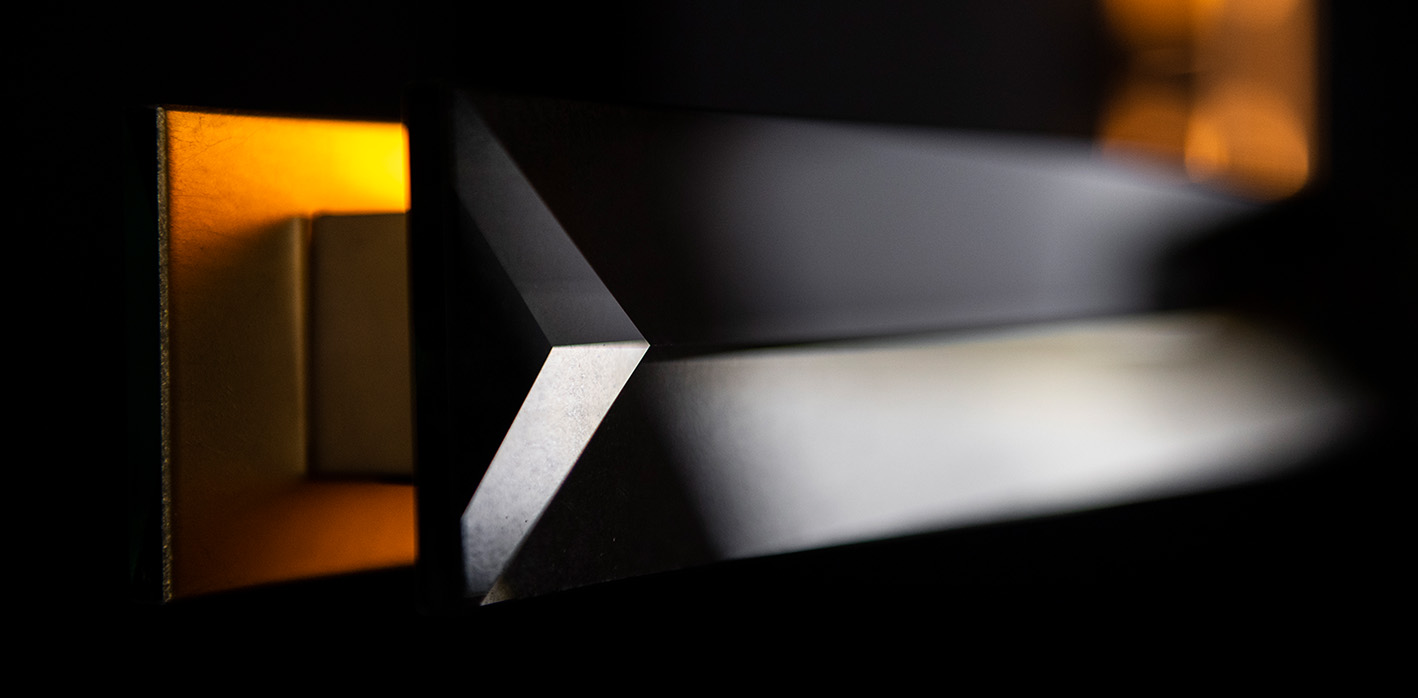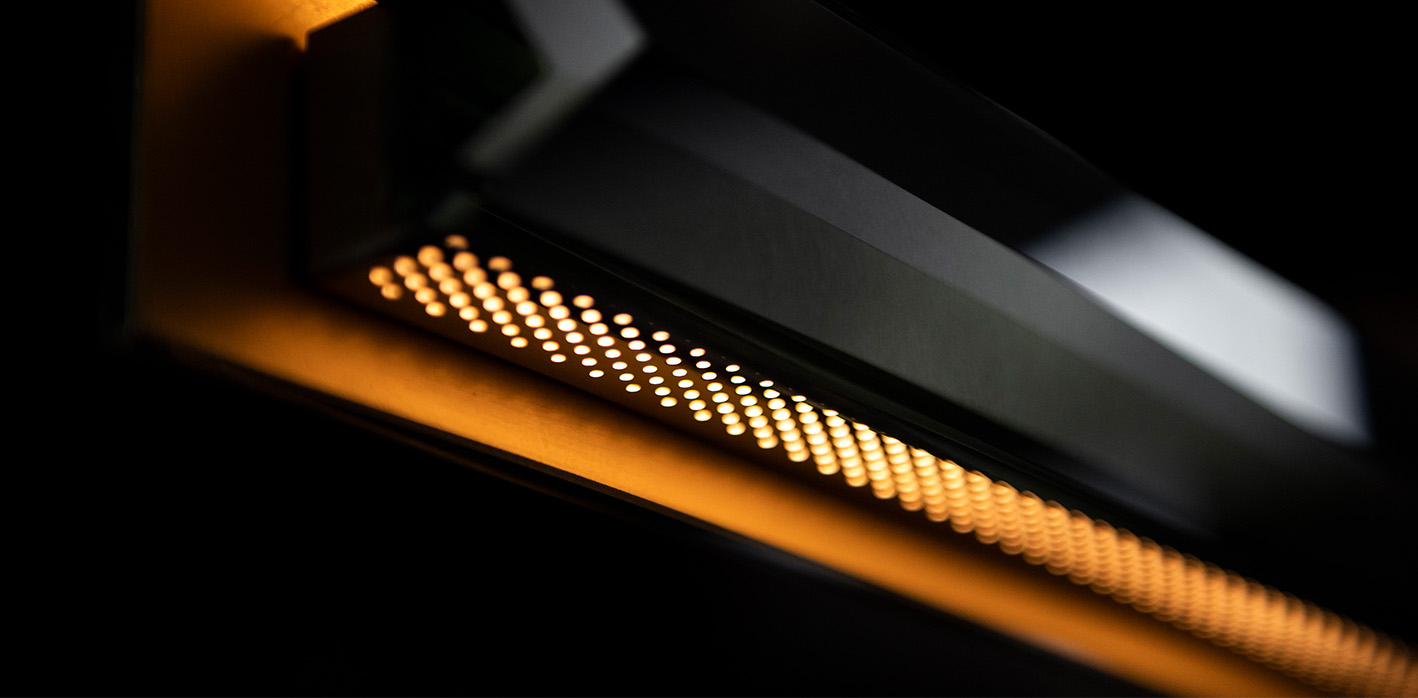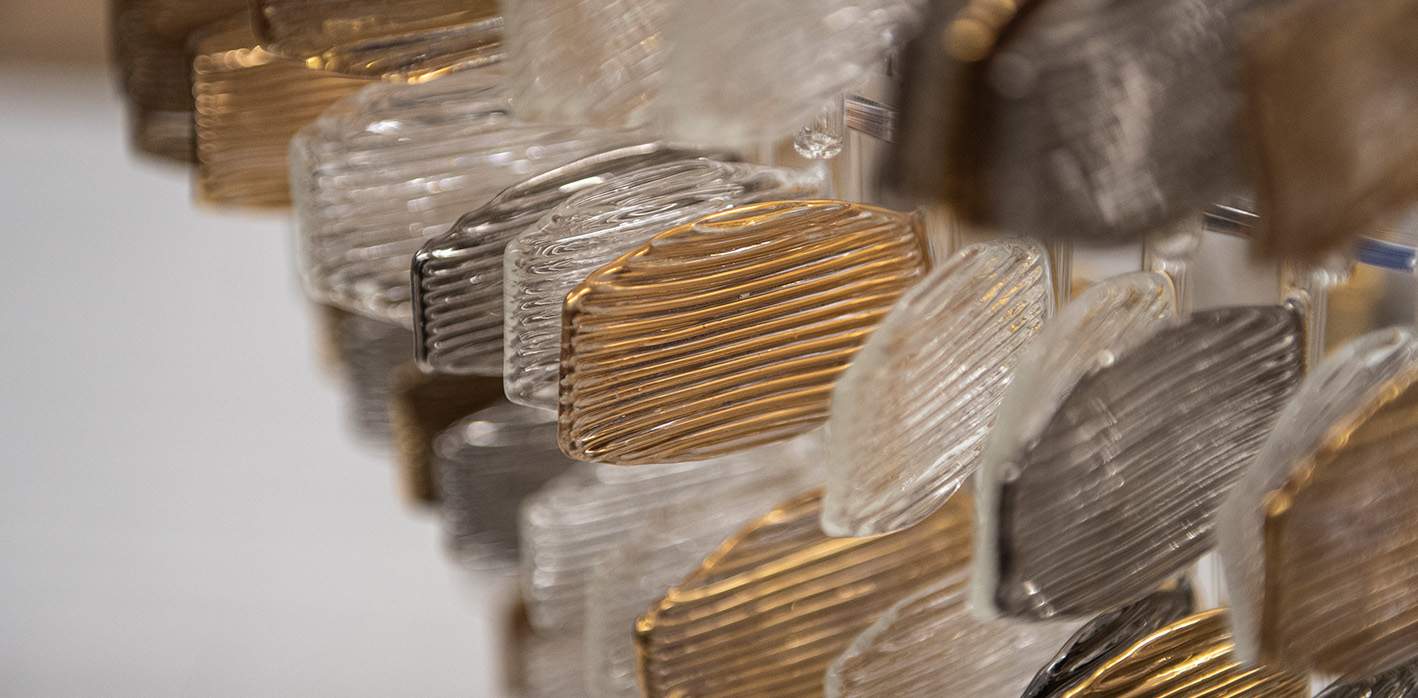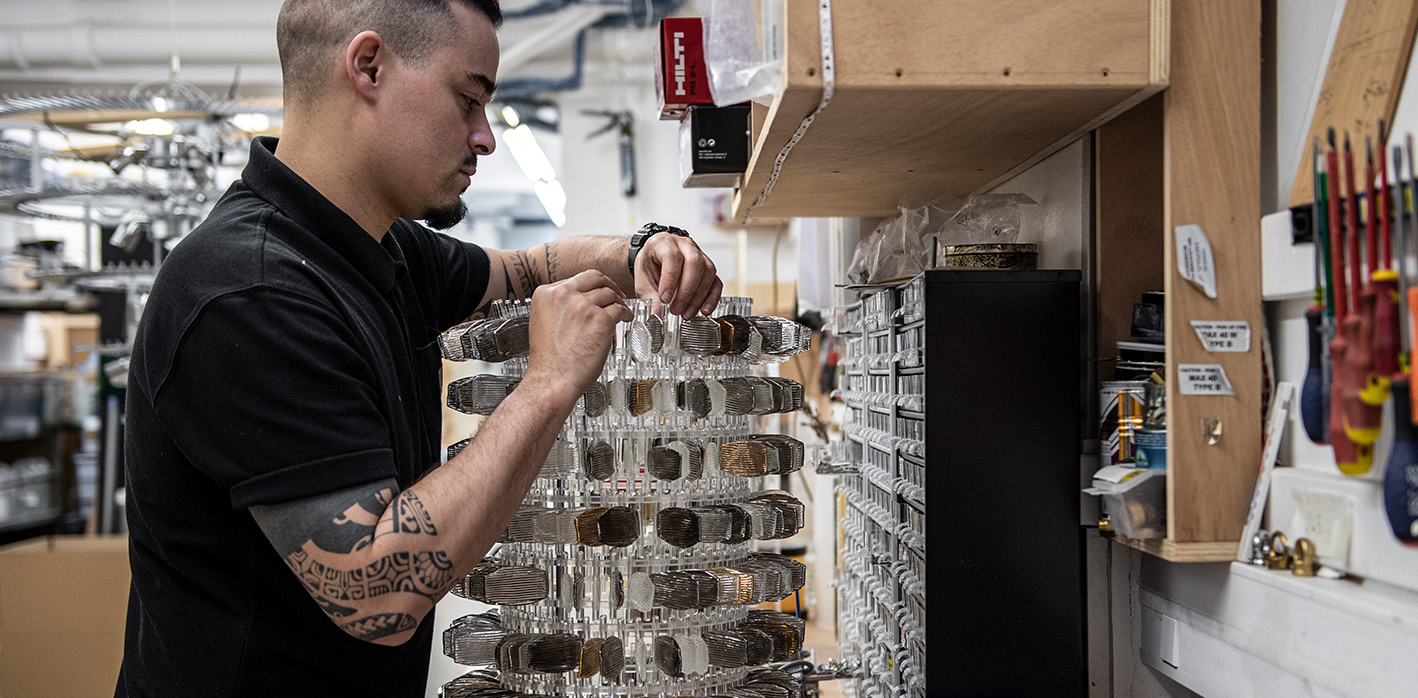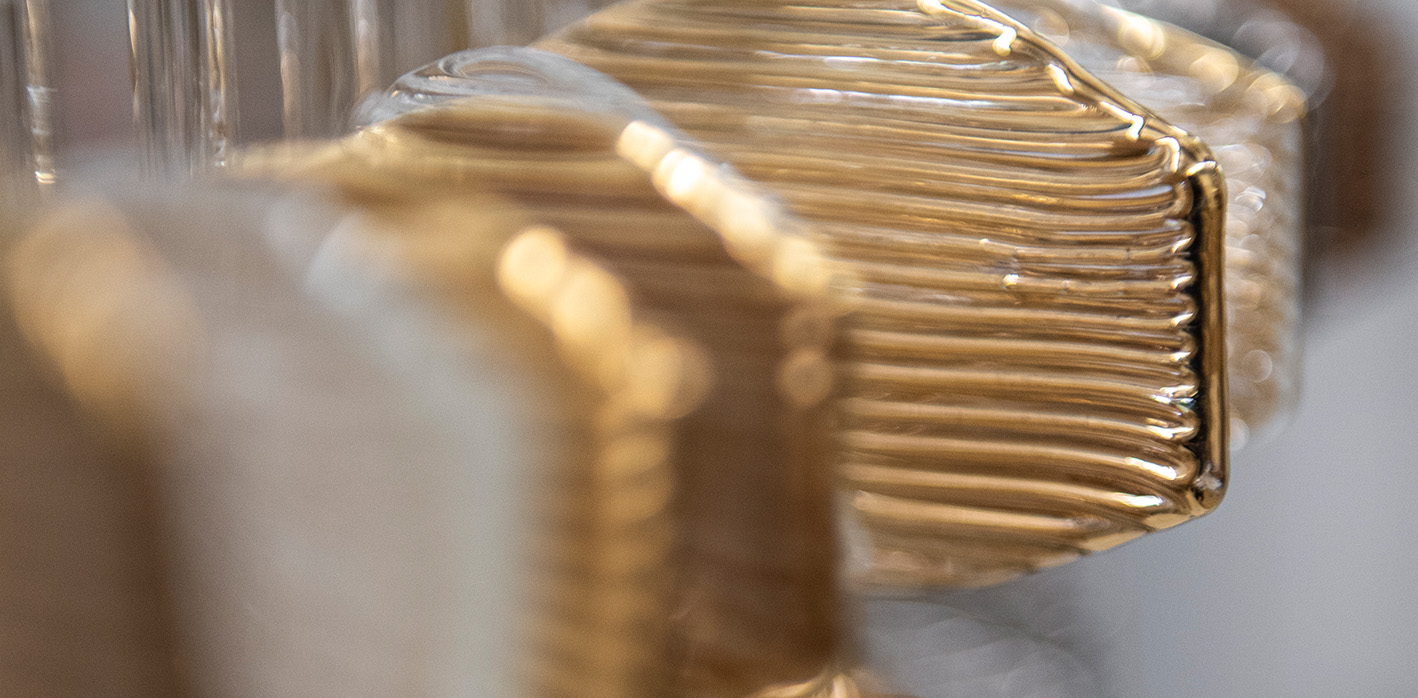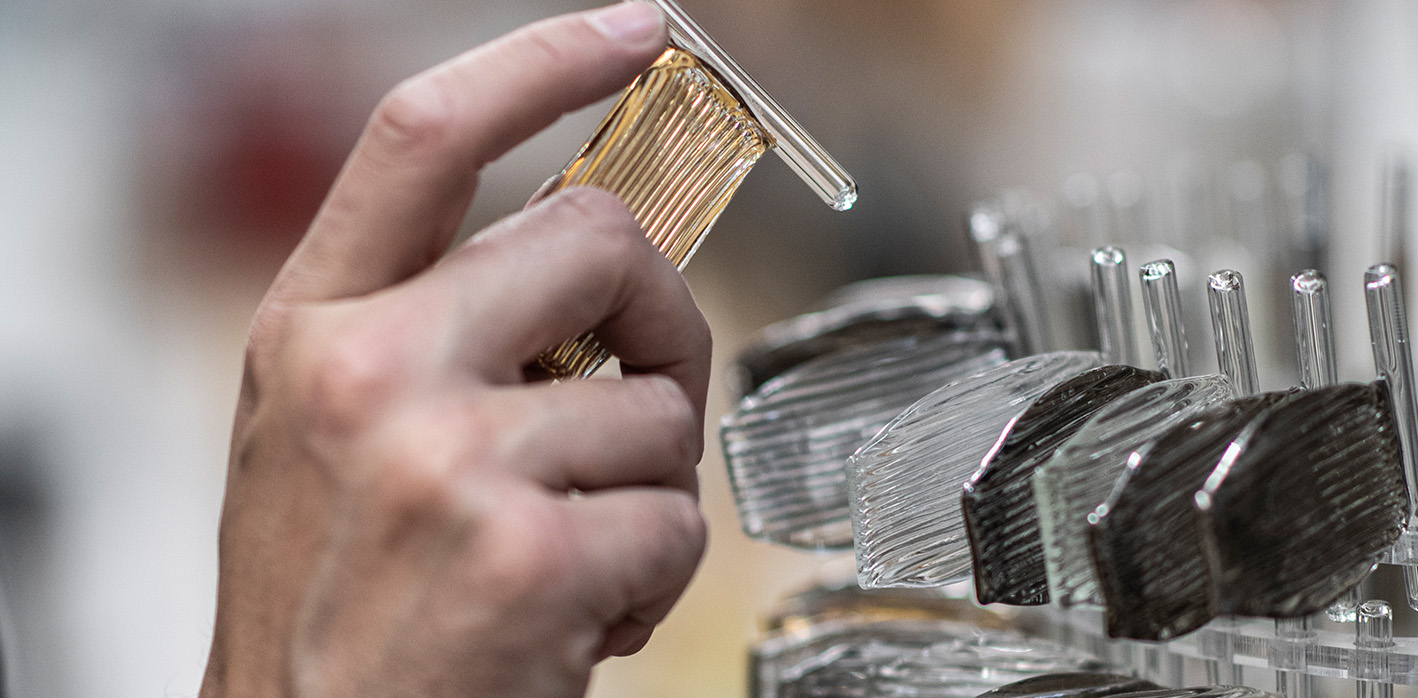Veronese
Editor, manufacturer of exceptional Murano glass pieces
Founded in 1931 in Paris, Maison Veronese embodies the very essence of Murano glass art, spanning from the golden age of Parisian decorative art to the most innovative contemporary designs. Interview with Ruben Jochimek, artistic director of this house combining passion, centuries-old craftsmanship, and innovation.
Veronese has been a family story since its inception in 1931.
It was founded by Mr. Marcel Barbier, who was passionate about Murano craftsmanship. While seeking new ideas for the French haute couture market during the decorative arts period, he brought this art to Paris. In 2009, my father, an artist himself with significant experience in haute couture, acquired Veronese. It was my father’s entrepreneurial spirit, his love for design and workshop work, that drove him to embark on this adventure, which organically became a family business. Since then, we have continued to advance Veronese’s original ideas of innovation and collaboration.
How old were you when your father, Freddie Jochimek, took over Veronese,
and could you describe the transition and his vision?
I was 30 at the time. My brother and I were both established in our respective fields myself in audiovisual and him in finance. Gradually, we became more involved in our father’s venture, lending support here and there. Eventually, the projects, possibilities, partners, clients, and the enchanting world of Veronese and Murano fully captured our interest and we were swept up by it! We’ve remained true to the original mission and vision: to deeply understand the craftsmanship of each Murano workshop and connect it to the right projects.
How do you divide responsibilities?
It’s quite simple, as we handle very different areas. I oversee artistic direction and brand positioning. My brother, Jonathan, manages administration and production management. Our design office, with three designers, brings new ideas and designs projects. We have one person in sales and one to two people in the workshop. Marketing had been neglected, and my wife took it over. She too was captivated by the magic!
What have been the major milestones for the house since the takeover in 2009?
Veronese has over 90 years of history, and with each new leadership, there has been a new momentum. In the 1970s, Veronese worked extensively for institutions, embassies, and palaces. In the early 2000s, the company shifted towards design. By the time of the takeover in 2009, this transition was well underway, but we aimed to remain in the high-end market, focusing on collectible design items that are unique and not commonly found in the mass market, due to their direct connection to the secular art of Murano. Each piece, each collection tells a unique story, showcasing specific craftsmanship. A significant milestone for Veronese since 2009 was our move to a new location in 2017. We transitioned from a fairly traditional showroom where we had been since 1953 to a larger, more open space. This move allowed us to create a comfortable environment for everyone: our team, our inventory, our workshop, as well as visitors and clients, and to showcase our collections in situ. This relocation enabled us to establish our brand universe, to view our pieces differently, and approach them with fresh perspectives. This space also serves as a place for hosting and fostering meaningful exchanges, which is crucial to us. Hospitality is one of our core values. We cherish these encounters as they often lead to lasting relationships and inspire beautiful projects.
What is your relationship with the artisans of Murano?
Murano is an industrial fabric composed of numerous workshops. It’s essential to immerse oneself and understand its operation. Italian artisans have a highly decentralized way of working within a small and insular geographic area: each has their own expertise, technique, and sometimes specific tools, yet they all collaborate fluidly and transparently on shared projects. Murano is also a diverse and evolving ecosystem, far from being static over time. It includes very small and larger workshops, both ancient and newly established, each with its own uniqueness and charm. Curiosity is key. You have to open doors, something my father did extensively after taking over in 2009. Through this, you discover techniques, colors, brainstorm ideas for projects, and understand their methods… Over time, relationships are built in many different ways. It’s a relationship based on mutual respect, trust, and collaborative intelligence. The island is like a giant workshop where you choose to work with exceptional tools and artisans.
Could you discuss your relationship with the pieces developed?
When I am on-site overseeing the creation of a piece, I am mesmerized by the artisans’ work. I could watch them for days on end. With each trip over the past 14 years, I discover a new technique, a new method to achieve a shade. It’s fascinating. And when we receive the piece in Paris, in the workshop, there is a mix of apprehension before unpacking it, and excitement too. There is a lot of pride and satisfaction when the result pleases us. And if it doesn’t meet our expectations… there is frustration, but always the energy needed to rework and search again!
How do you work with architects on large-scale projects?
For a large-scale project, whether due to its technical complexity or size, we approach development similarly to a more conventional project. There are typically two approaches. First, an interior architect or decorator may conceive a piece, such as a monumental chandelier for a hotel atrium, and present us with a design. They rely on our expertise, knowing we can bring their vision to life. This principle applies whether the project involves a table lamp for a private residence. Alternatively, the architect may have a project for an atrium or need a piece for a master bedroom. They provide us with inspirations, colors, textures, materials, client preferences, and artworks that will adorn the space. They ask us to propose creations based on these inputs. Regardless of the project’s scale, we work on proposals from our existing collections or develop new ones. Collaborations progress through dialogue. Practically, once the design is discussed, we conduct a feasibility study and address budget considerations with preliminary development to provide a more precise estimate. Upon approval, we proceed with detailed development and planning for metal, electrical components, and glass elements if applicable. Some custom projects may not involve glass at all, but the project phases are similar in approach.
Which was the first designer you collaborated
with when you took over as artistic director of Veronese?
The first collaboration was already underway when the company was acquired in 2009, with Chantal Thomass. It was exciting and very enriching to see her highly feminine universe applied to Murano glass. However, the first collaboration we initiated ourselves was with Tal Lancman et Maurizio Galante, who designed the Coral and Anemone collections. The latter is particularly significant for us, as it aimed to break the barrier between human and object, allowing the possibility to touch the glass fronds of the chandelier.
How did you meet Collection Latil, and what do you find
interesting about their approach?
We met through Charlotte Biltgen. I found their approach very original and — at the risk of sounding a bit pragmatic — their business model transparent and honest. Their fixed-price operation, while allowing great freedom of action and direct contacts, aligns well with what we aim to offer at Veronese: fostering encounters. You never know where a meeting might lead, but exchange is very important to us. The environment, people, and projects presented by Collection Latil around craftsmanship are interesting, complementary, and coherent. I believe this platform can be a great vehicle for meaningful encounters.
Find Veronese also in the Collection and Address spaces.
Photos @Anne-Emmanuelle Thion, ©Véronèse, ©Pierrick Verny
